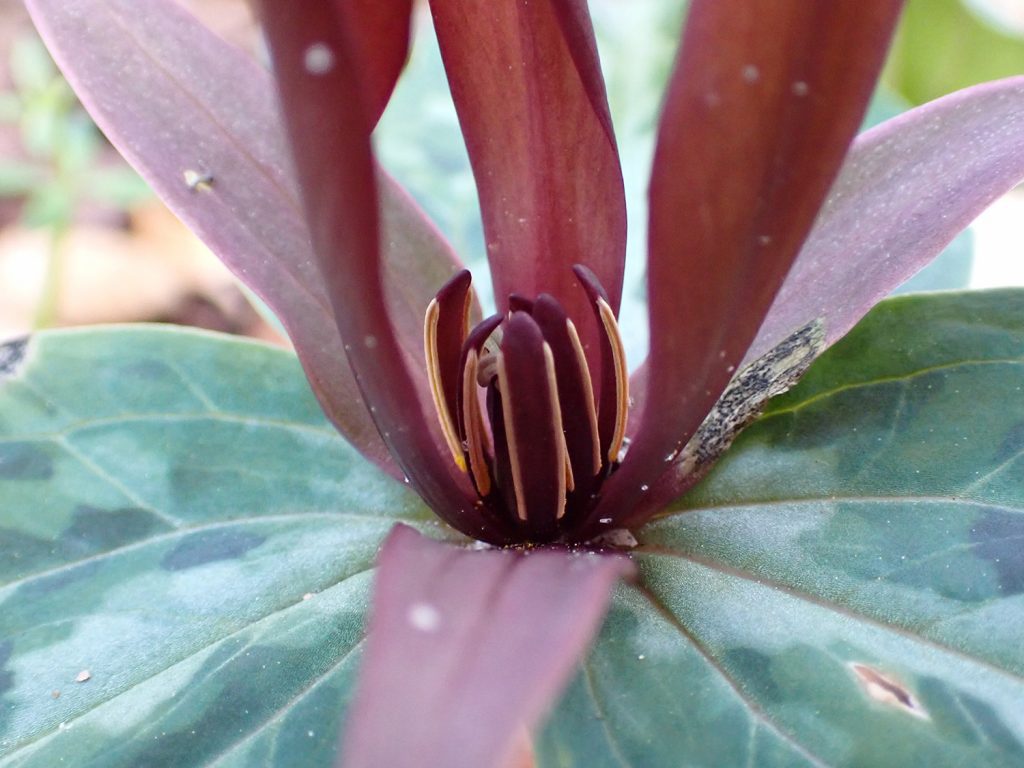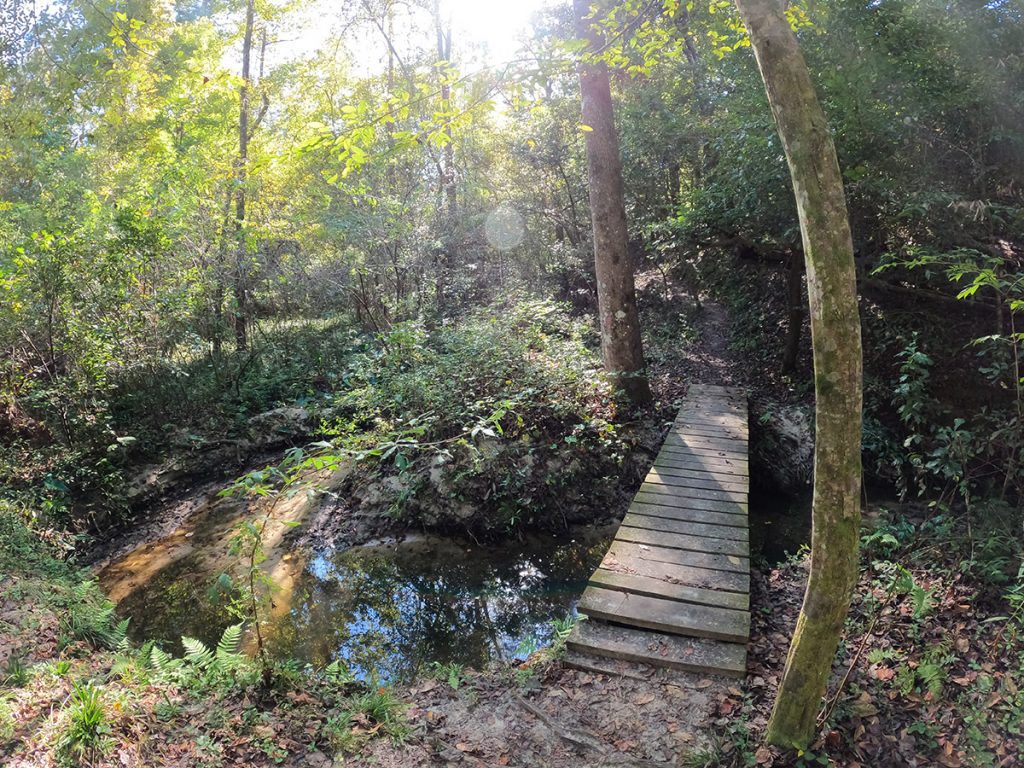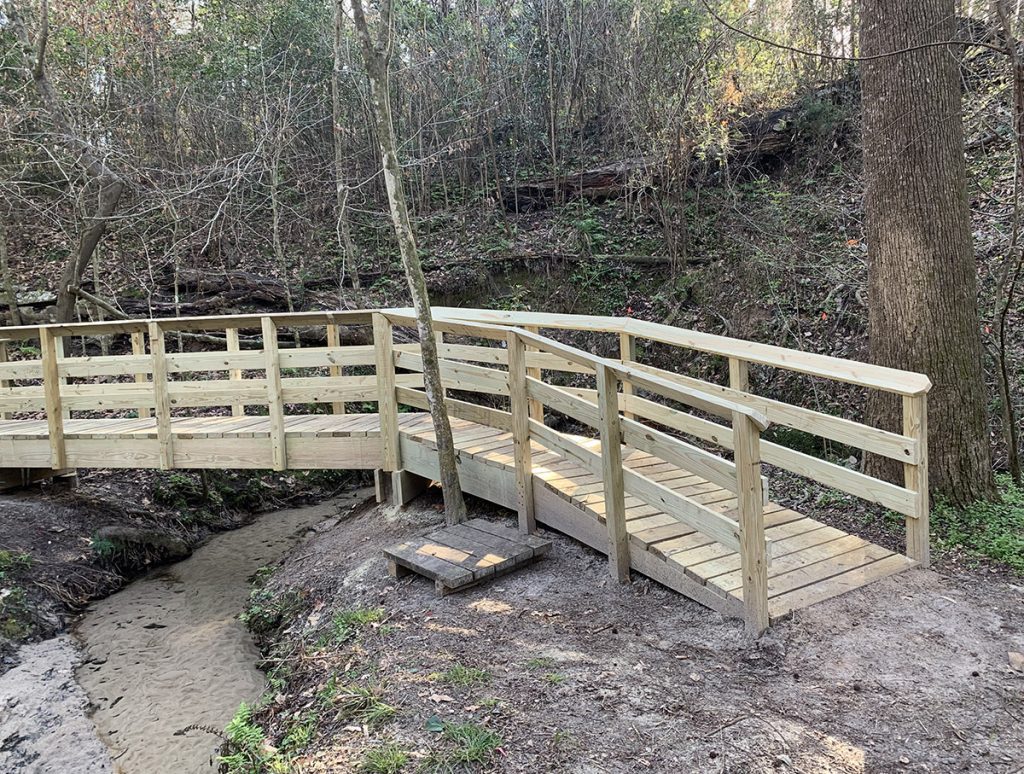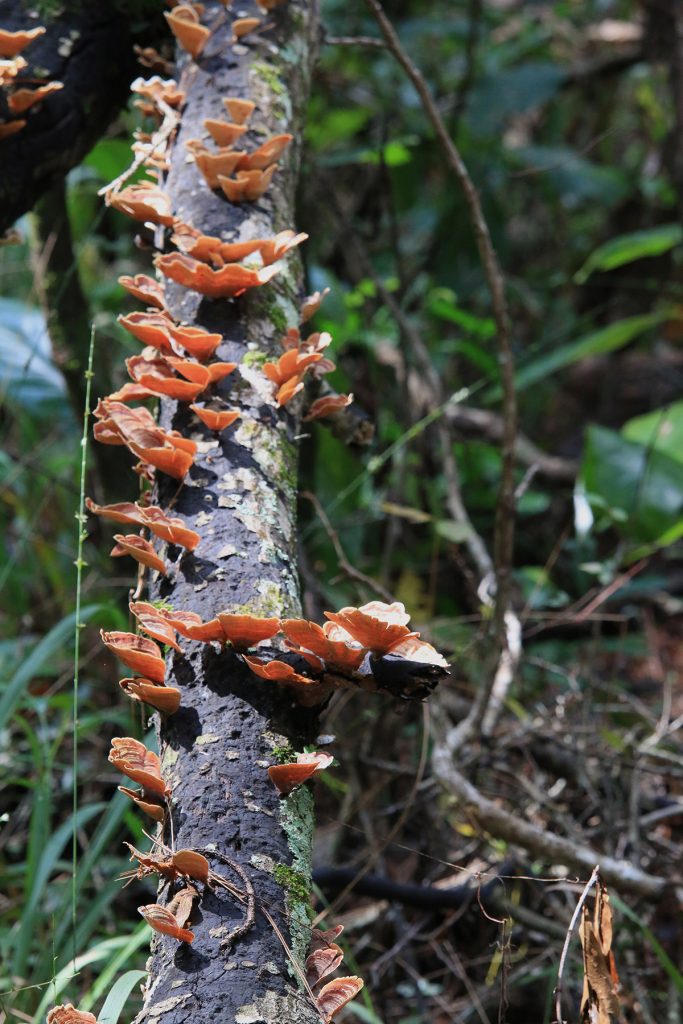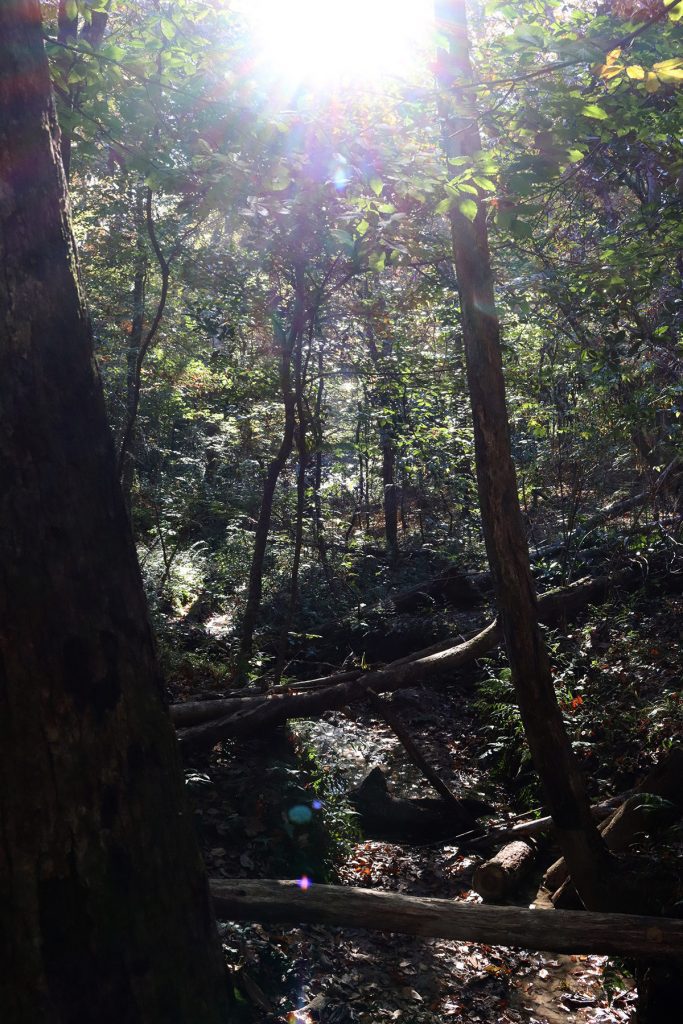From the outside, this place doesn’t look like it wants to be a park. There’s no sign visible from the street, and the parking area is a dirt and gravel patch that might fit four cars. You start your journey in the shadow of an I-10 overpass. And yet, once I first passed into the shade of the Timberlane Ravine Trail’s canopy, I was in love.
To me, ravines and upland hardwood forests are magical places in our area. Imagine how our Red Hills region looked a few hundred years ago. The hills would have been covered with longleaf pine habitat, where regular fire maintains an open canopy. This is a bright and sunny place, where wildflowers bloom between widely spaced trees.
Within this open landscape, we’d find pockets of shadow. These are low, wet places, where fire doesn’t easily penetrate. In this dense hardwood forest, we find several plant species at the southern end of their range. Some ravines have slopes that are larger and steeper than others; it’s not always dramatic, but it’s more elevation than we get in most of the state. It’s a little bit of a piedmont feel, the foothills of the Appalachians meets Florida panhandle.
Here at Timberlane Ravine, the City of Tallahassee has preserved a little pocket of upland hardwood forest conveniently within city limits.
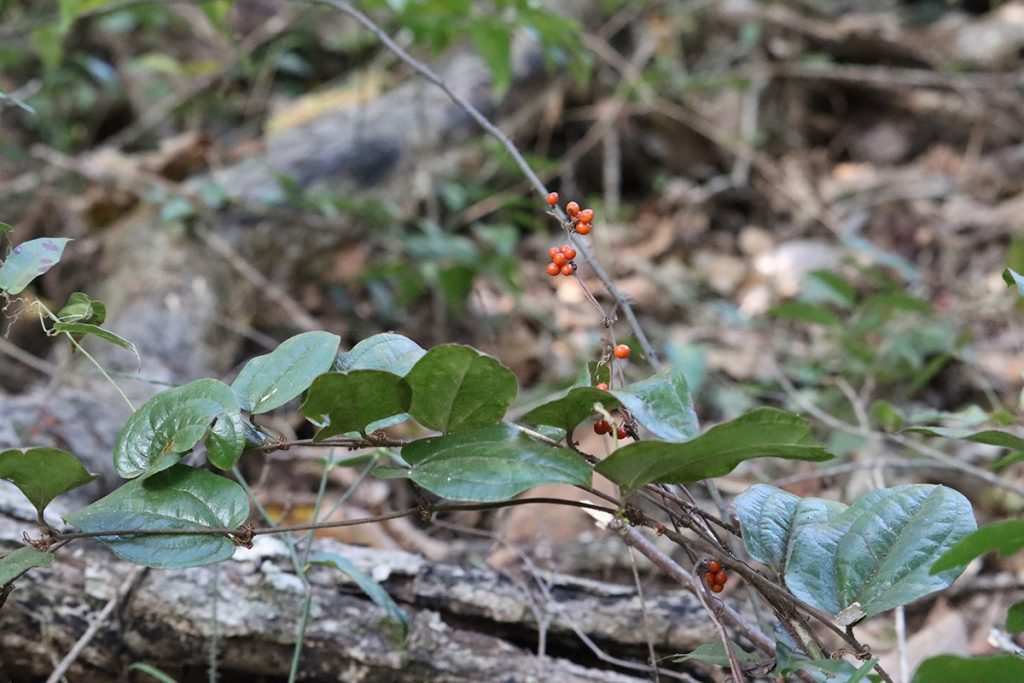
Upland Hardwood vs. Slope Forest
Before I started writing this, I would have referred to this type of habitat as a slope forest. And while I see a lot of sources using a broader definition of the term that would include places like Timberlane Ravine, I’m using upland hardwood forest.
In 2010, the Florida Natural Areas Inventory (FNAI) revised its definition of slope forest, narrowing it to hardwood forests in the Apalachicola Bluffs and Ravines region. Steephead ravines and river bluffs along the Apalachicola are larger and have steeper slopes than in most of Florida. Those slopes are home to the highest diversity of trees and shrubs in the United States, and a high number of endemic plant and animal species.
Upland hardwood forests are a related ecosystem, one where we won’t find Florida torreya trees, pyramid magnolias, and fireback crayfish. The tree cover is similar, common trees including southern magnolia, Florida maple, American beech, and several oak species, among others.
Again, this is where we find the southern range of several plant species:
“Upland hardwood forest of the Panhandle support several herbaceous species that are more common north of Florida, including woodland pinkroot (Spigelia marilandica), bloodroot (Sanguinaria canadensis), heartleaf (Hexastylis arifolia), May apple (Podophyllum peltatum), and several species of trilliums (Trillium underwoodii, Trillium decipiens).”
Guide to the Natural Communities of Florida, 2010 Edition (Florida Natural Areas Inventory)- Page 17
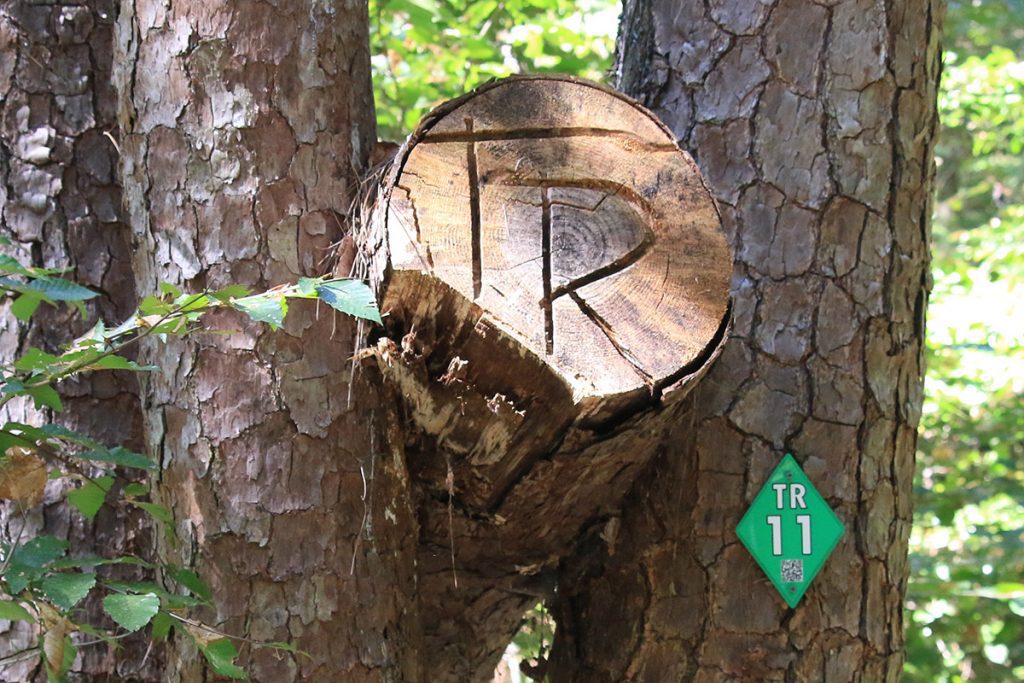
Timberlane Ravine Trail at a Glance
Location: The trail is located where Timberlane School Road meets I-10, just south of the overpass. It’s on your left if you drive north on Timberlane School Road from Live Oak Plantation Road.
Trail: The trail is a 1.5 mile loop. While there is a little bit of elevation, the trail is fairly easy. If you’re hiking, keep an eye out for cyclists.
Plant List: Here’s a link to a plant list put together by Dr. Loran Anderson for the Magnolia Chapter of the Florida Native Plant Society. Click here for more north Florida plant lists.
Photographing the Timberlane Ravine Trail
This post is a collection of photos from over the past two years, and I’ll likely add to it over time.
What keeps me coming back, you might ask?
A lot of it has to do with the plants I just mentioned. As in any habitat, there is a seasonal schedule. Winter blooming trilliums give way to early spring blooming jack in the pulpits. I’ve not visited in the summer, but plan to next year to see the flowers of the southern magnolia vine. The fall is full of red seeds, from strawberry bush to those of jack in the pulpits and sarsaparilla vines.
One of my favorite reasons to visit here, though, has more to do with dead plants than living ones. A forest dense with trees is one where you’ll see a lot of fallen trees. Nature always reclaims its dead plants and animals; everything that dies ends up fueling new life.
At Timberlane Ravine, you can see the ways in which trees are broken down, over time, to become soil for other trees. Birds, insects, fungi, and more take advantage of softening wood to feed, nest, and ultimately help the decomposition process. I don’t think I’ve ever seen dead trees break down in as visually compelling a way as I have here. This is a place for mushroom as well as plant lovers.
“One of the most important trees in the forest is a dead tree.”
This quote comes from Native Nurseries owner Elizabeth Georges. In that interview, we were looking at nesting habitat for bees. Many bee species make use of dead plant matter for their nests, such as wildflower stalks in the winter, leaf litter, and wood.
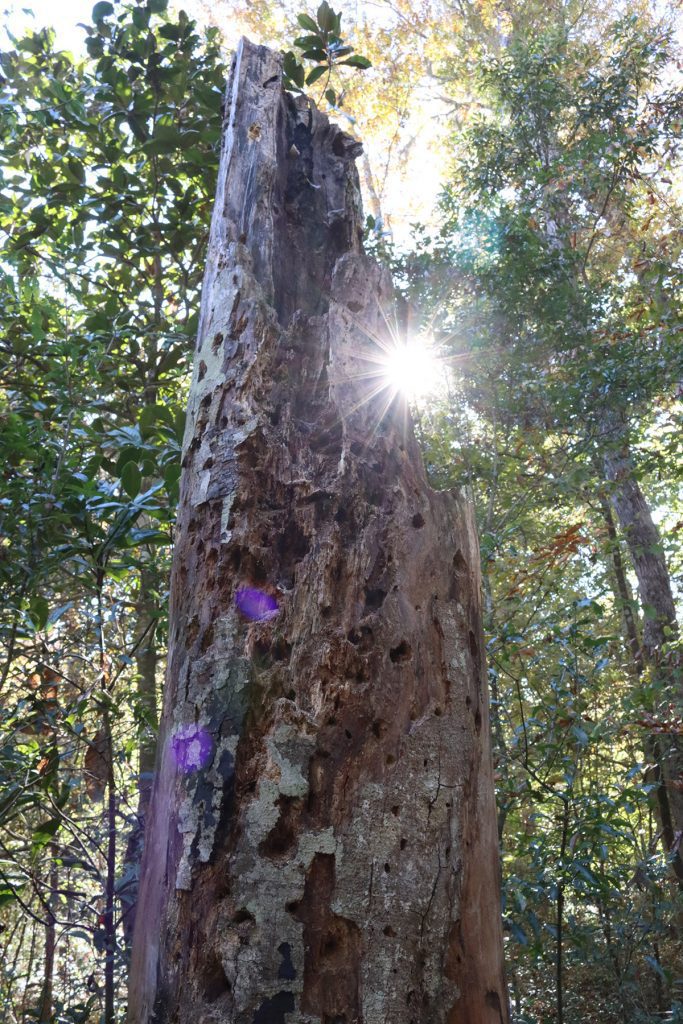
Snags, those dead trees that don’t fall over, are relied upon by all but one species of woodpecker in our area as a place to nest. As we see in the photo above, the soft wood is also where woodpeckers find food. Many other bird species, such as bluebirds, nest in snags as well.
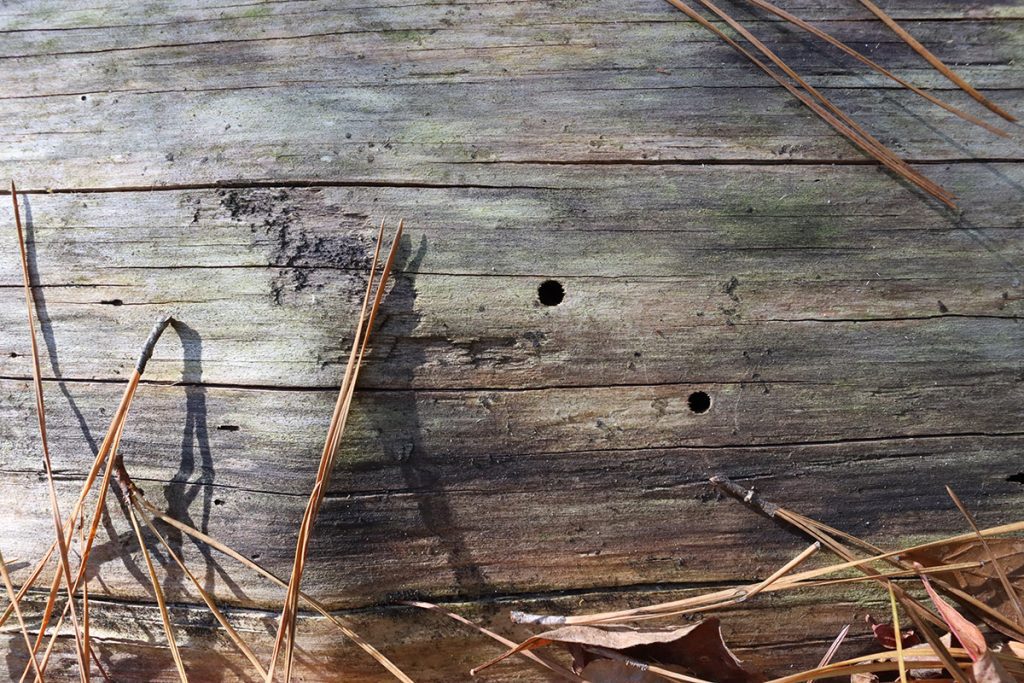
The many mushrooms of Timberlane Ravine
On our first visit to Timberlane Ravine, we were just past a rainy period in Tallahassee. As a result, we saw a variety of mushrooms growing from fallen trees. A mushroom is the fruitbody of a fungus, which grows from mycelium when conditions are right. The mycelium is the below ground- or, as we see here, the “in the wood”- part of the mushroom, and it’s there whether we see mushrooms or not.
So, even when we don’t see it, the fungus is taking nutrients from the wood and aiding in its breakdown.
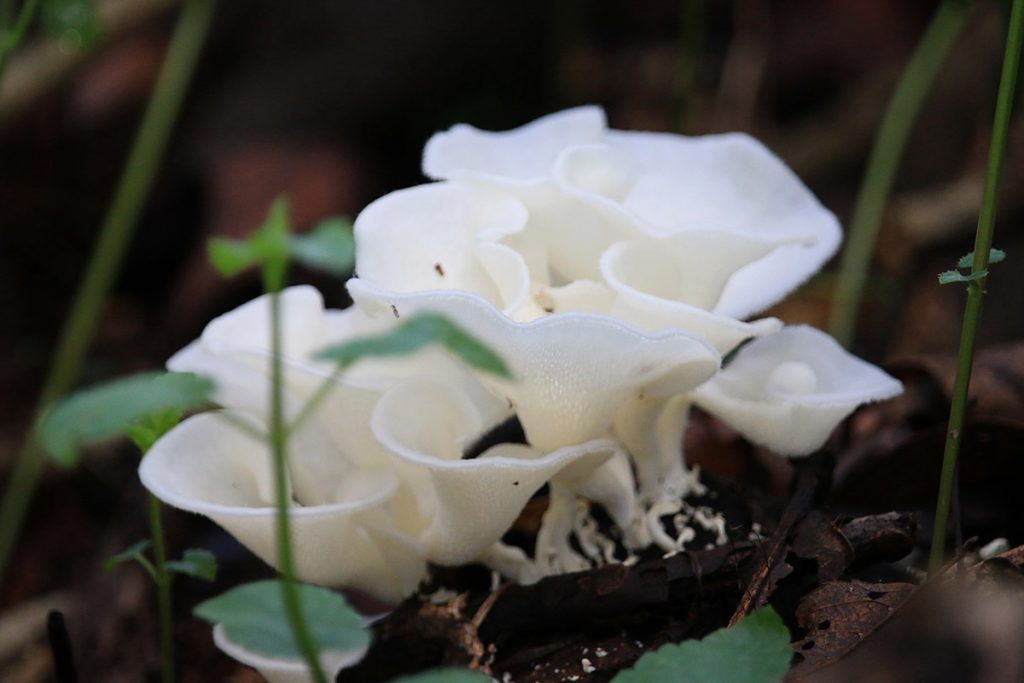
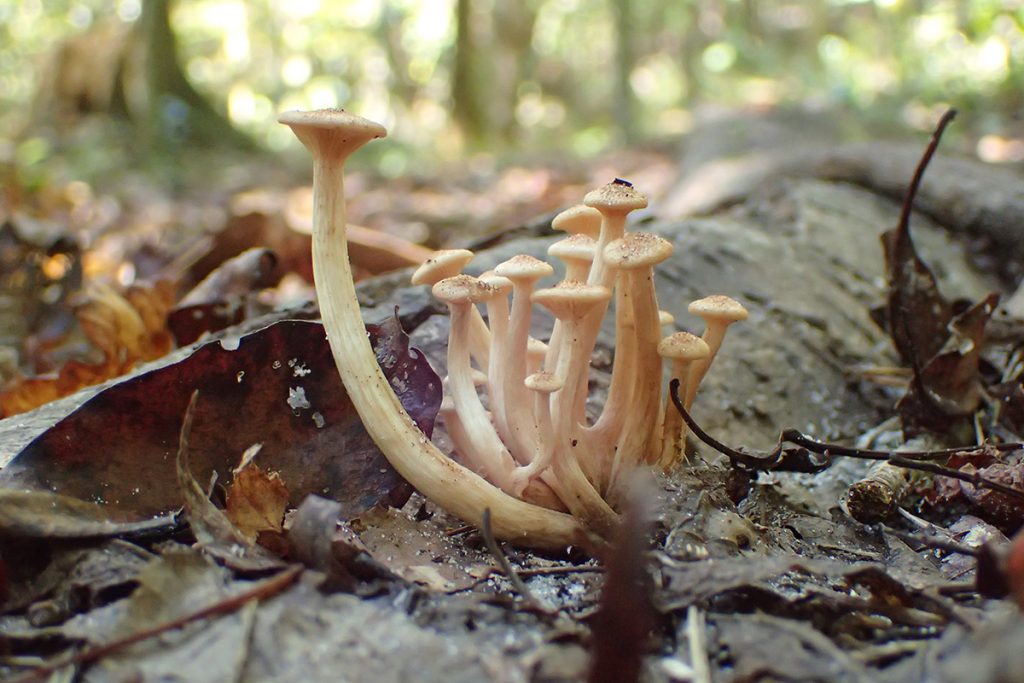
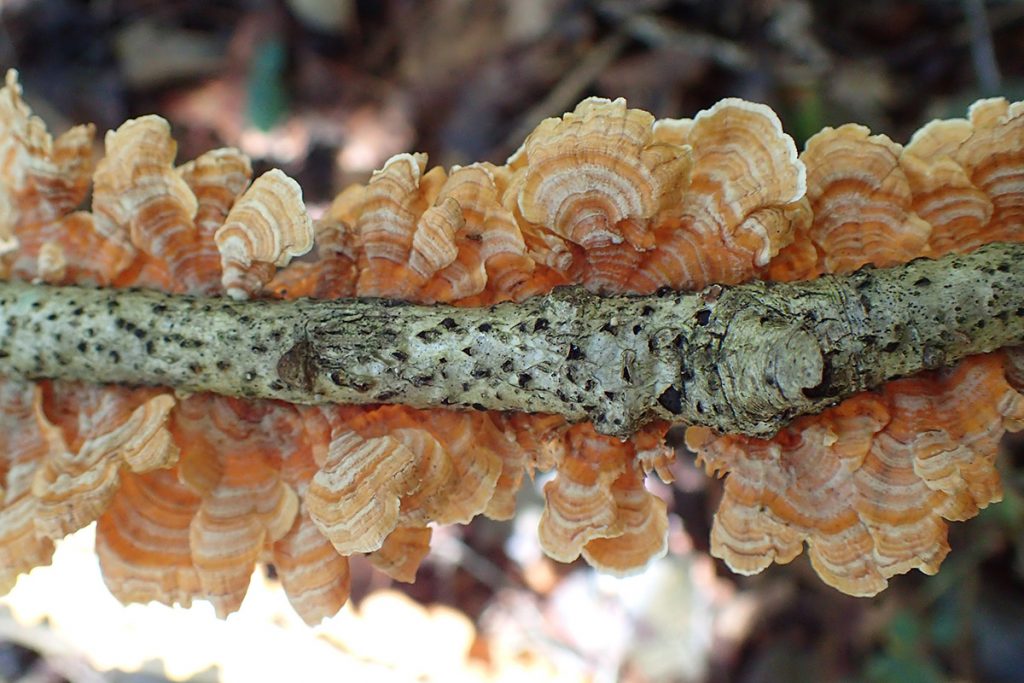
This one stumped me on iNaturalist, and no one has chimed in with a guess. Likewise, it’s difficult to pin this down in my copy of Mushrooms of the Gulf Coast States (a book I was inspired to buy after my first visit here). Many genera of mushrooms contain many similar looking species. And mushrooms can also look different depending on how new or old they are.
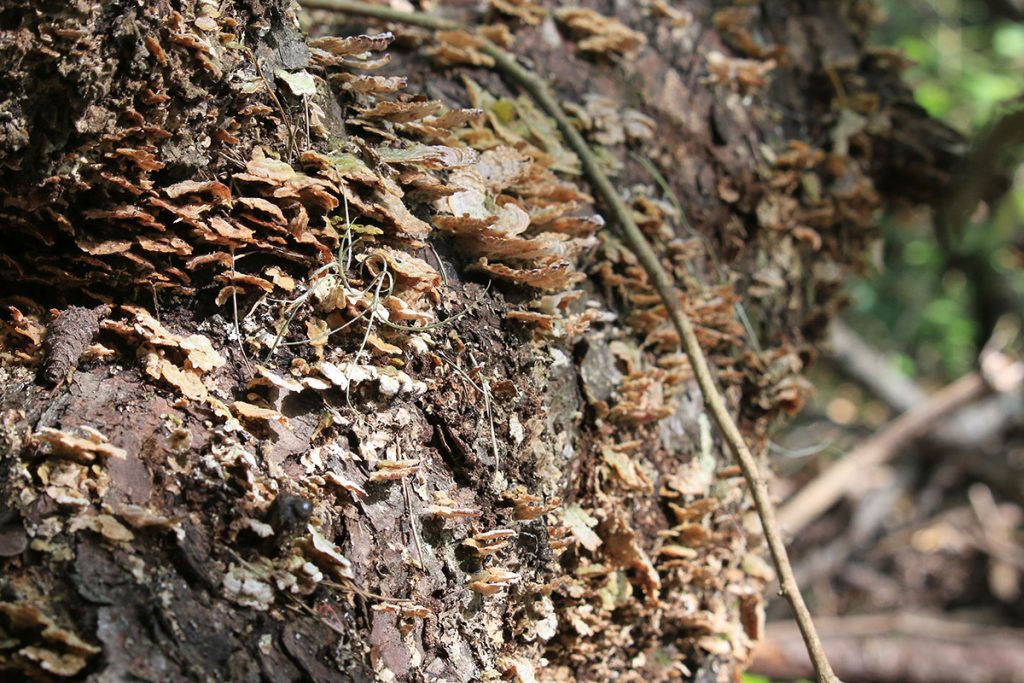
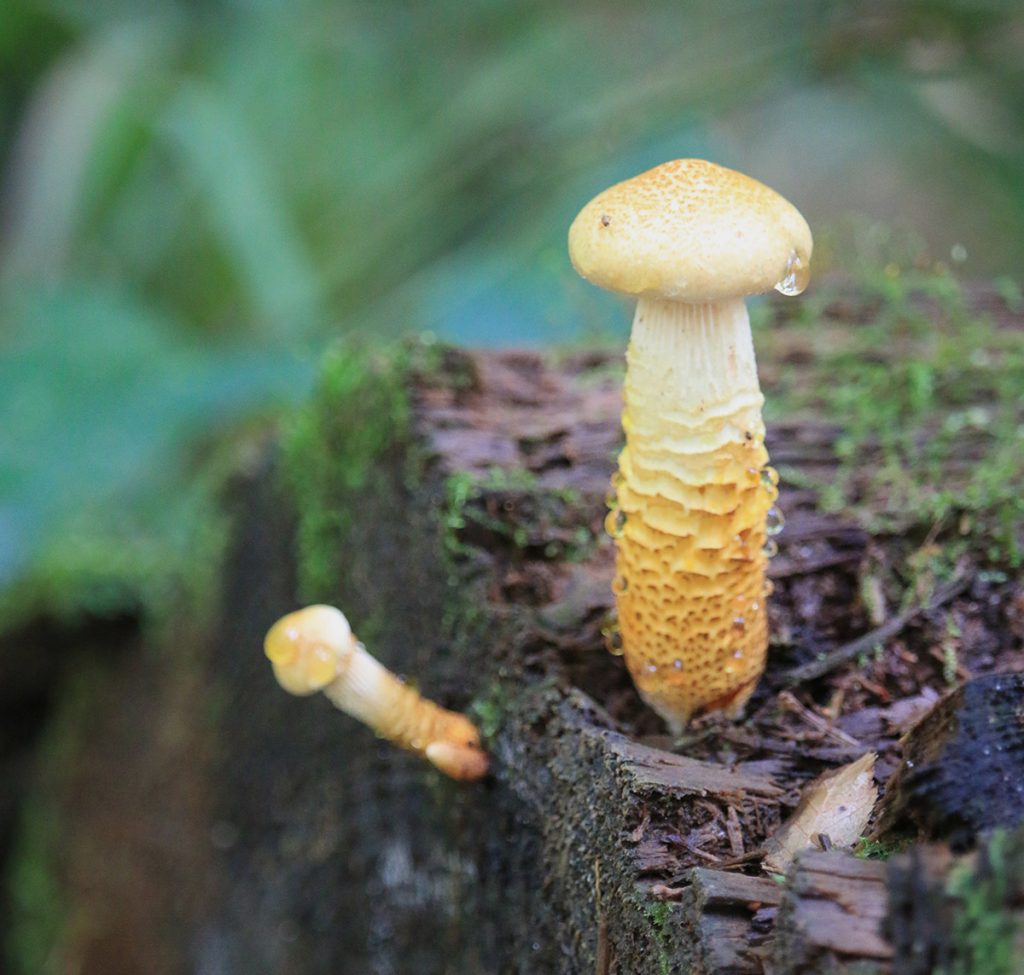
Neolentinus lepideus is my best guess at the moment. It has a scaly stalk and cap, but is orange where the photos I’ve seen of the species are brown. It may be newly emerged, and continue to change as it grows. That’s the problem with only seeing a mushroom once- you don’t always see what it becomes, or how changes.
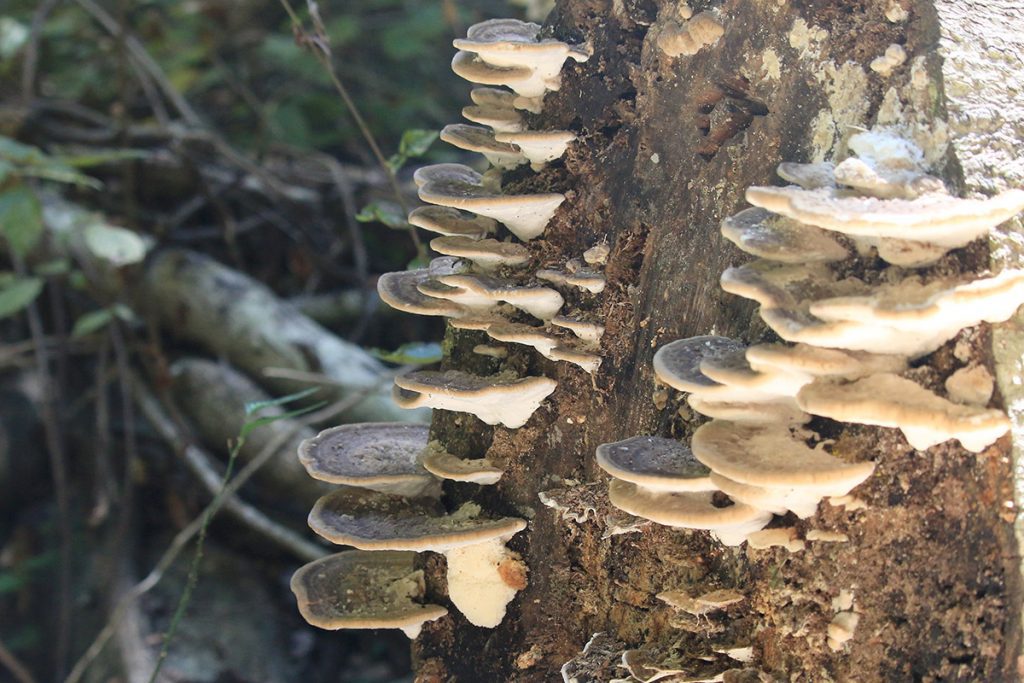
The photos I see of Ganoderma show orange mushrooms, but these may have faded.
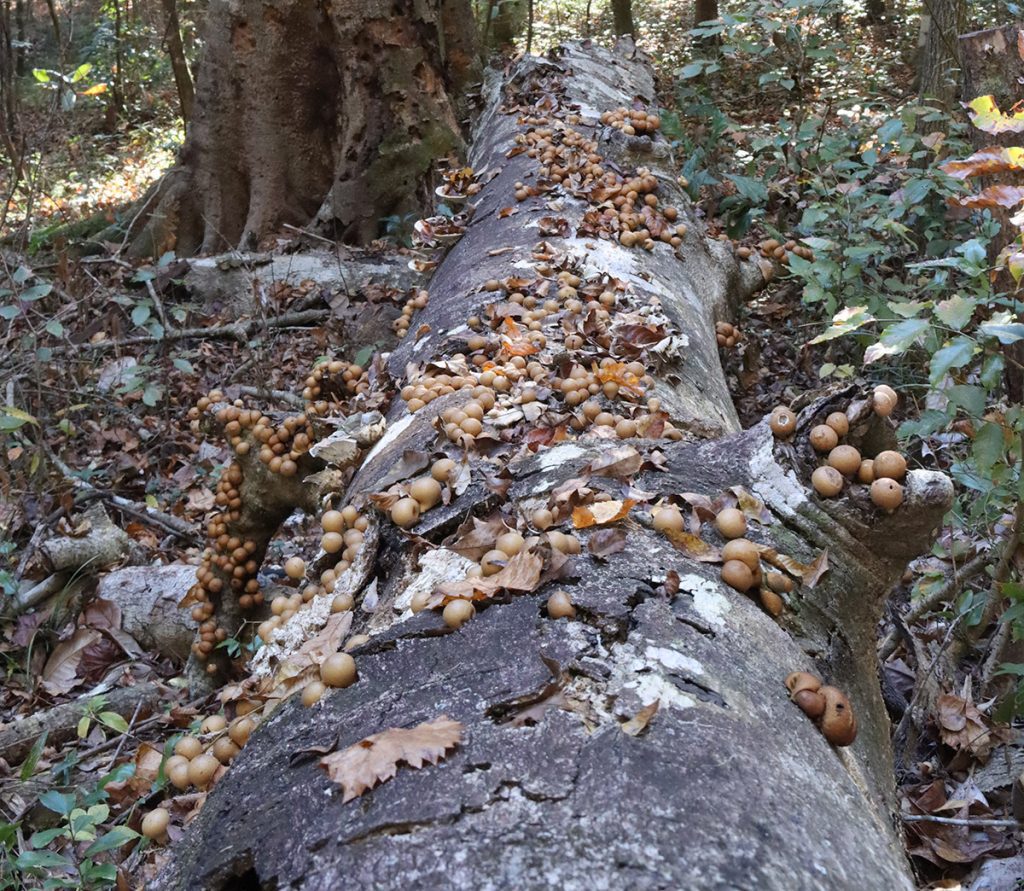
One last mushroom I didn’t think was a mushroom:
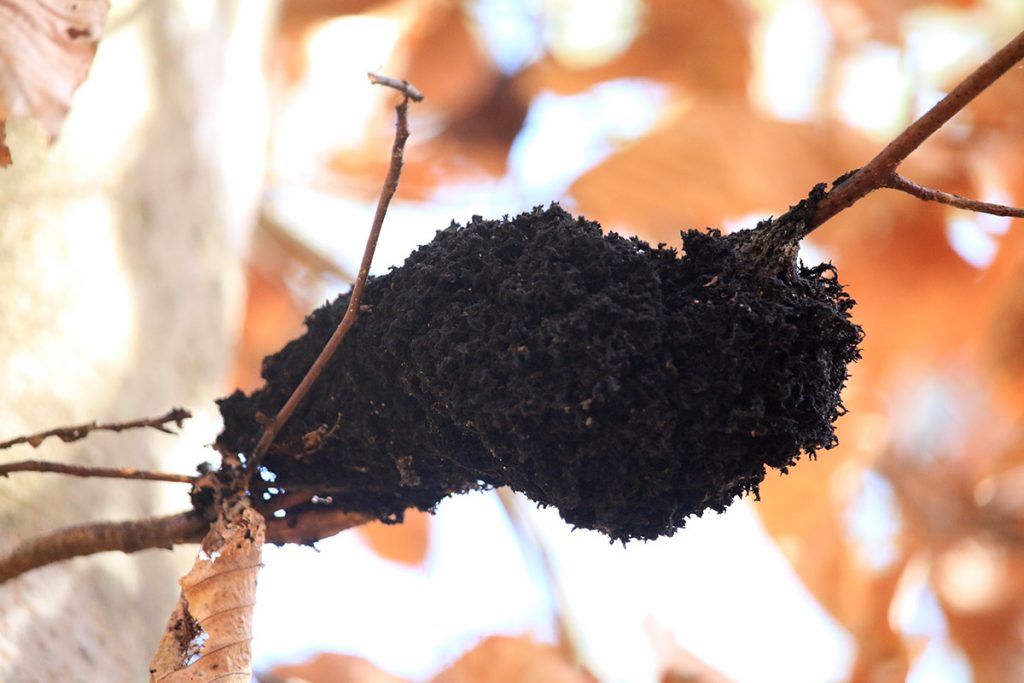
As I was leaving the trail one day, I saw what looked like a clump of soil around a branch. I figured this was a living thing, though I had no idea what. I found a smaller clump of it on the ground, which I photographed and uploaded to iNaturalist:
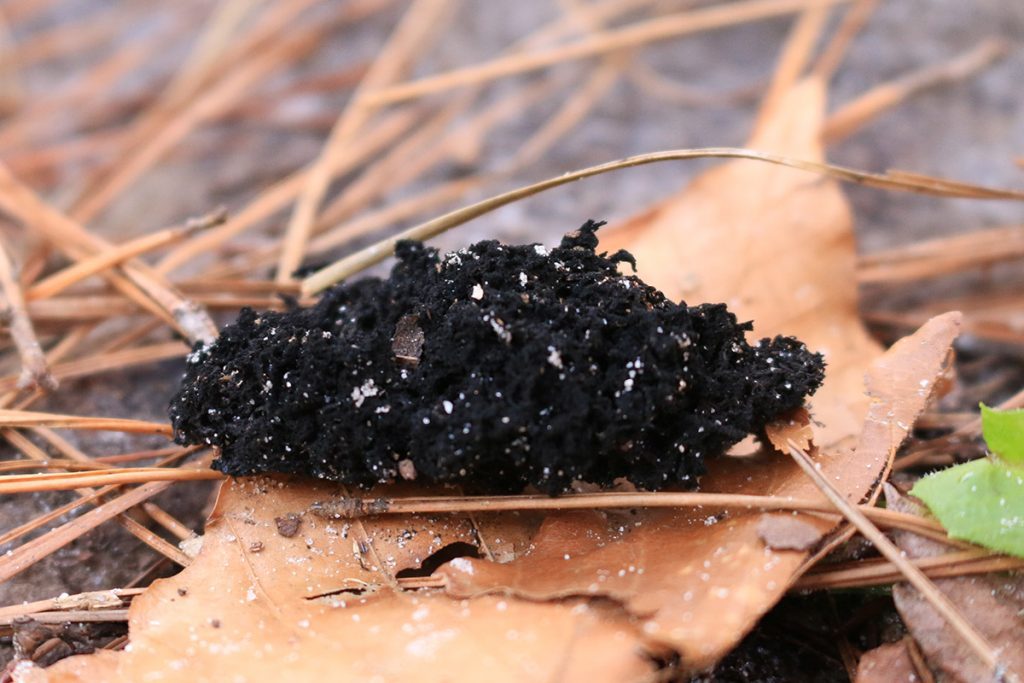
This is honeydew eater, a fungus with a highly specialized diet. The beech blight aphid (Grylloprociphilus imbricator) forms colonies on only one species of tree: the American beech (Fagus grandifolia). The aphids leave a large amount of residue on the plant, which is called honeydew. This mushroom grows specifically on honeydew.
A few photos of stumps and decomposing wood
Not everything that grows on wood is feeding from it. Many times we see moss or lichens on dead wood, but these grow on the surface; there are no roots taking resources from the wood. They also grow on living trees. Moss grows in moist, shady places, and so naturally we see a bit of it here.
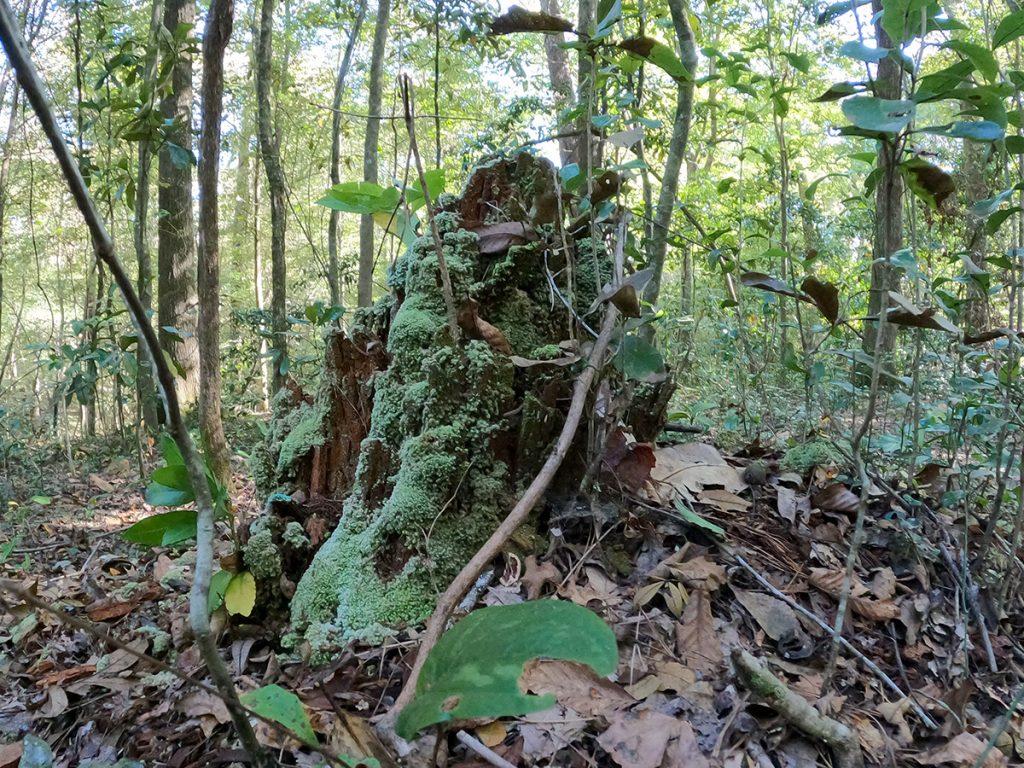
Underneath decaying stumps and logs, various reptiles and amphibians find a home.
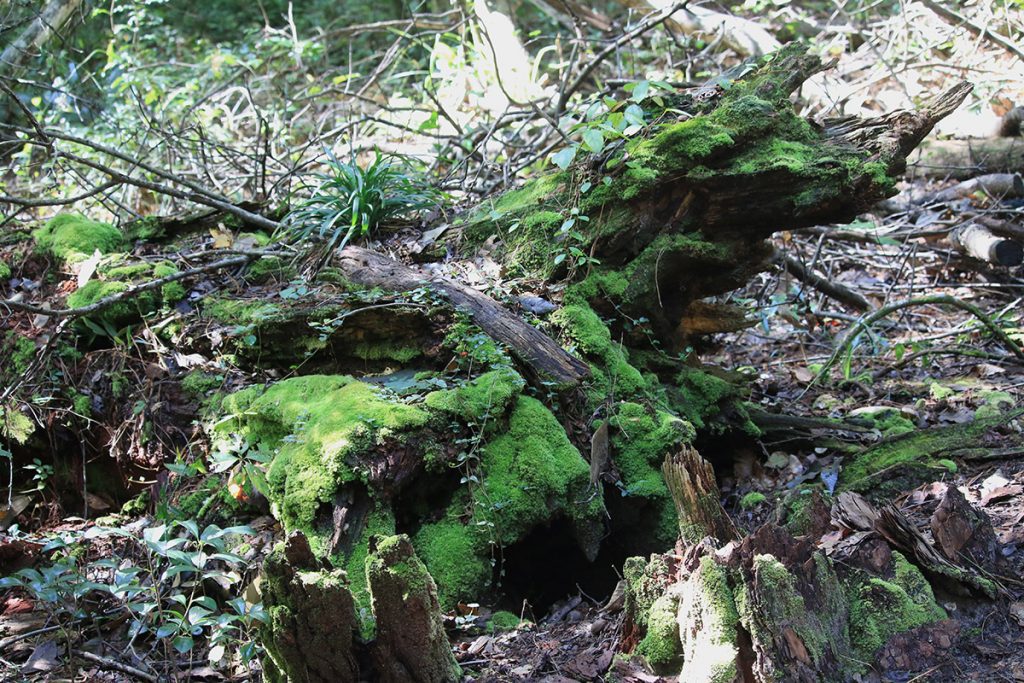
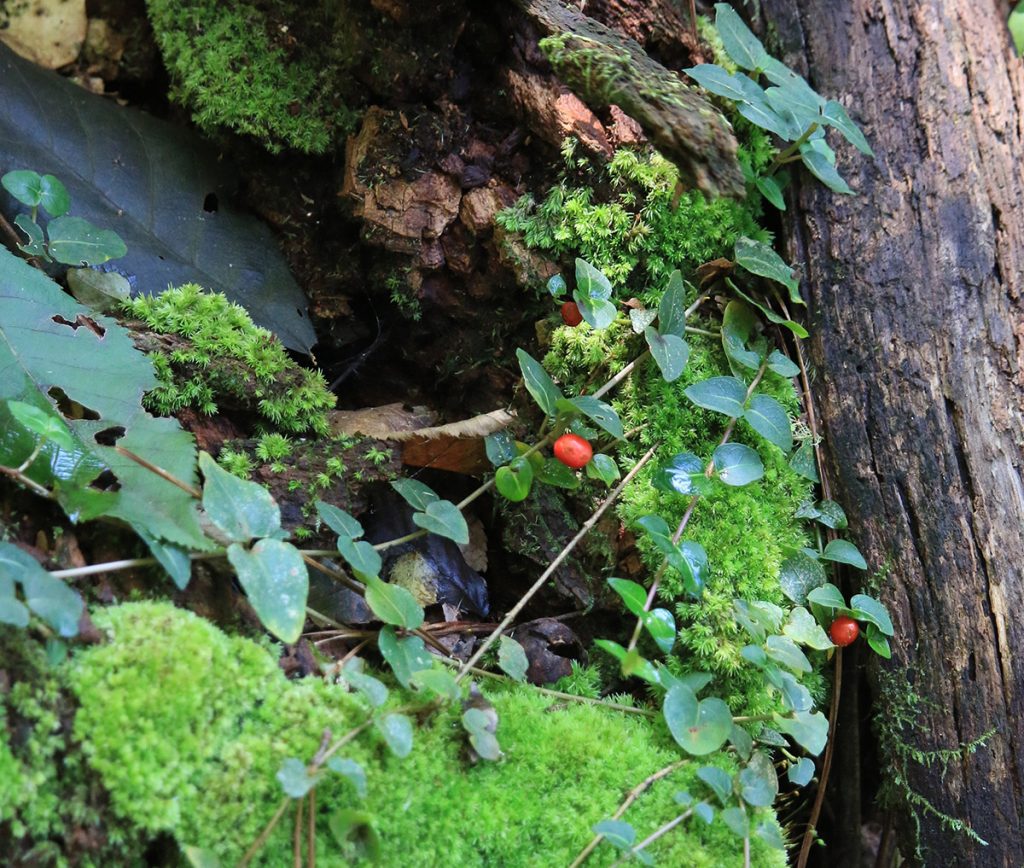
Partridgeberry is common in both slope forests and upland hardwood forests.
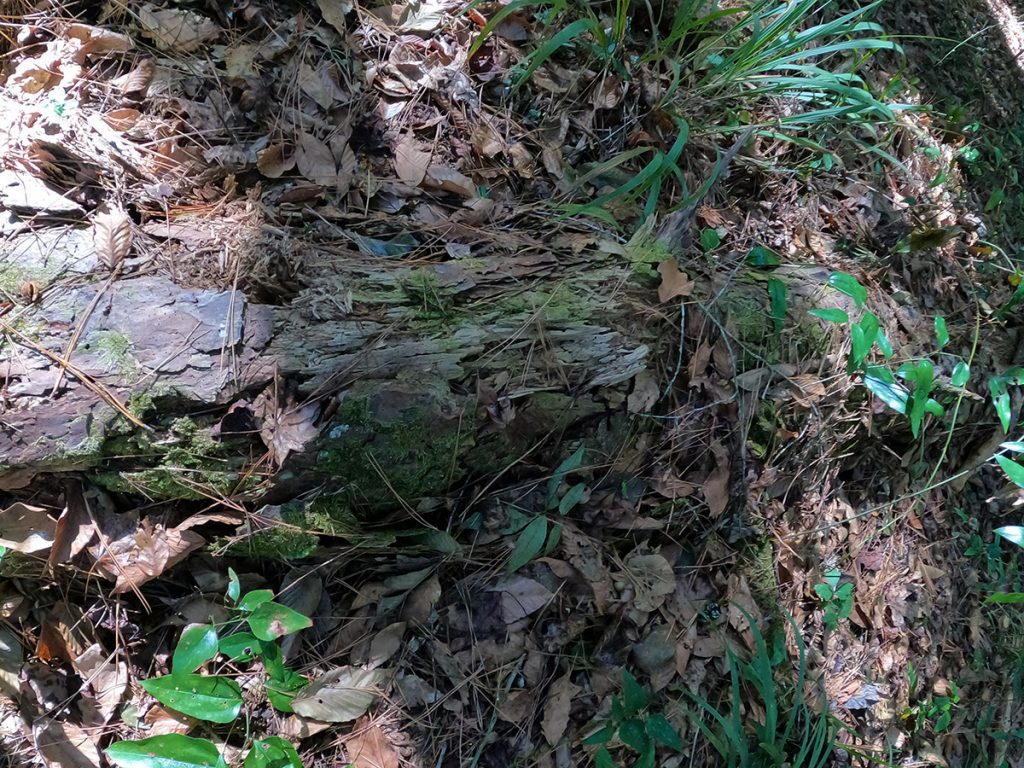
The wood beneath the bark is soft and half sunk into the ground.
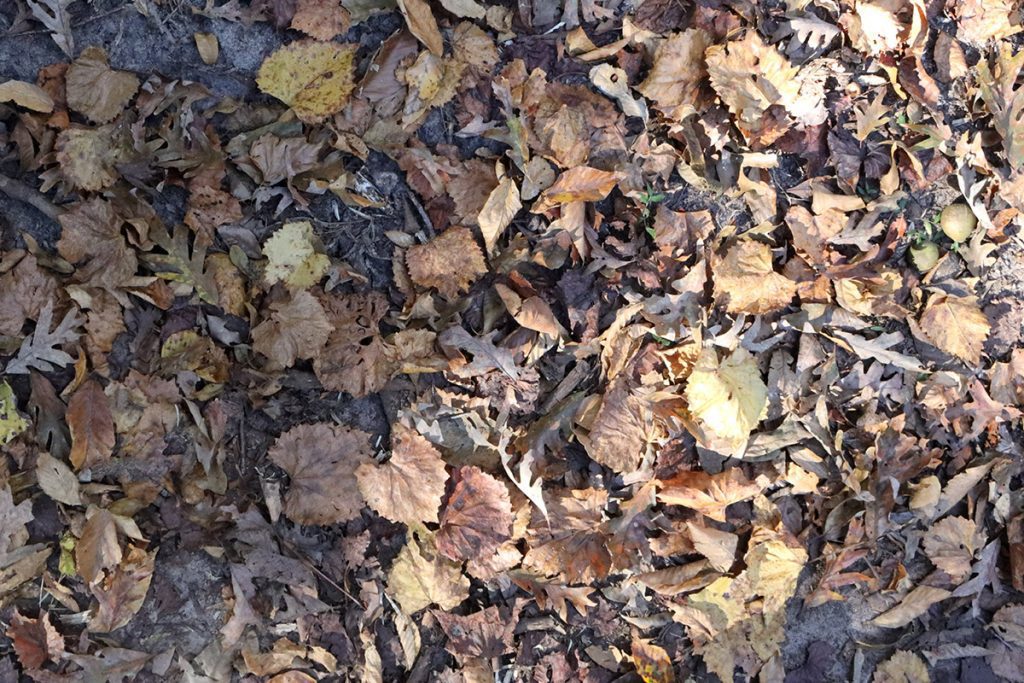
Leaves also decompose and add to the topsoil layer, while providing food for organisms such as insects. Here’s the part where I say what I often say- if you let your leaves lie in the winter, you’re providing a habitat for nesting bees and various insects that stock the food web in your yard.
The plants of Timberlane Ravine
This is the section I hope to add to over time. When I started writing this, I found the plant list I linked to above. I found that there are some interesting plants I either overlooked, or that are best seen at times of year I’ve not yet visited here. I think of this as a cool to cold weather kind of trail, but it may be worth braving mosquitos a time or two to get a fuller sense of plant life around the ravine.
In the winter- trillium
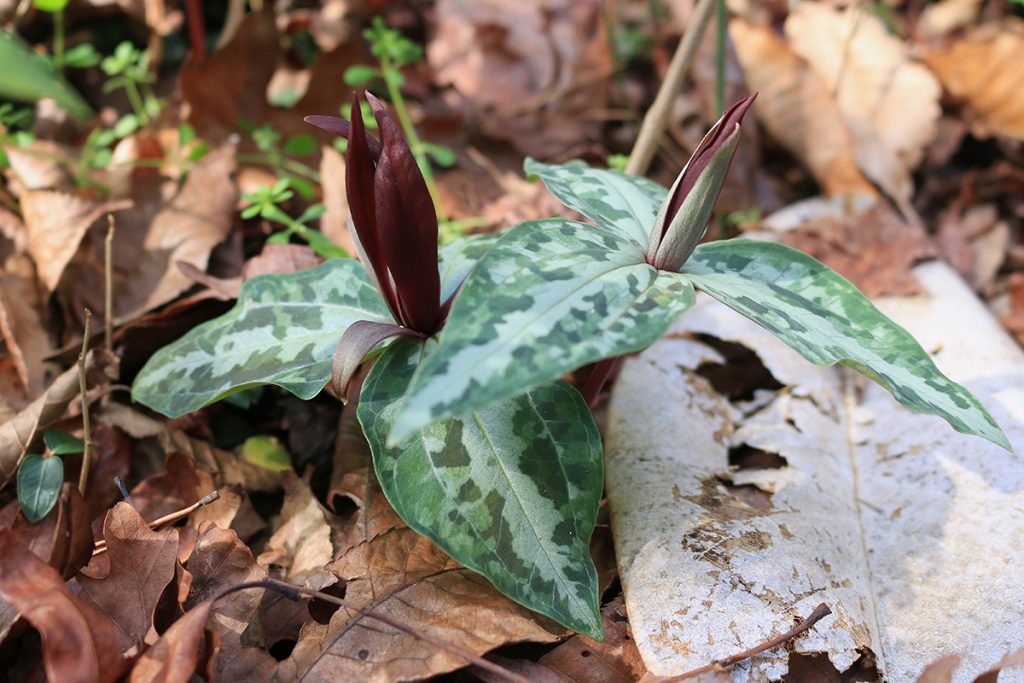
There are a few trails in town where we can find trillium in the early part of the year, including Elinor Klapp-Phipps Park, AJ Henry Park, and the Overstreet Trail at Maclay Gardens State Park. Timberlane Ravine is a short trail where you can see quite a lot of trillium, for the most part in January and February.
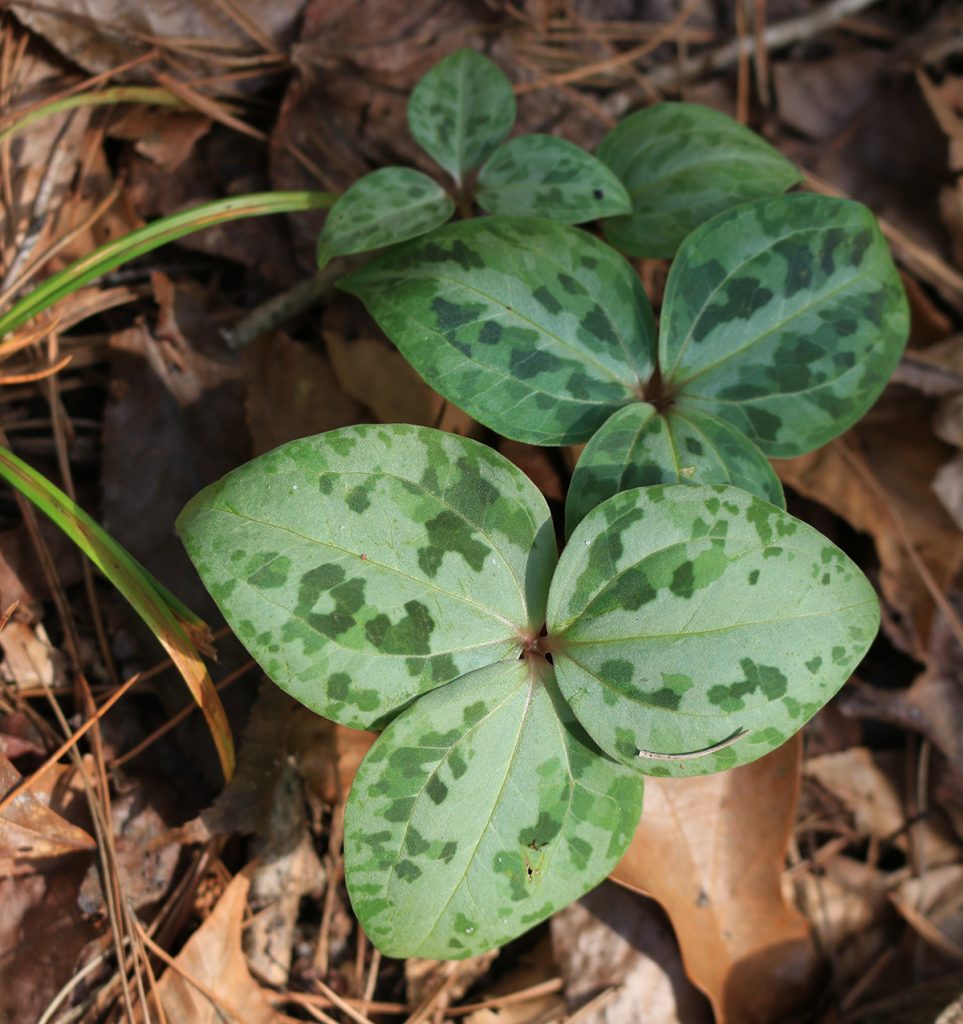
Walking around in January of 2021, I saw trillium with round leaves, pointed leaves, and in darker and lighter shades of green. I thought I was looking a two or more different species. I was not. It turns out that Underwood’s trillium has highly variable leaves.
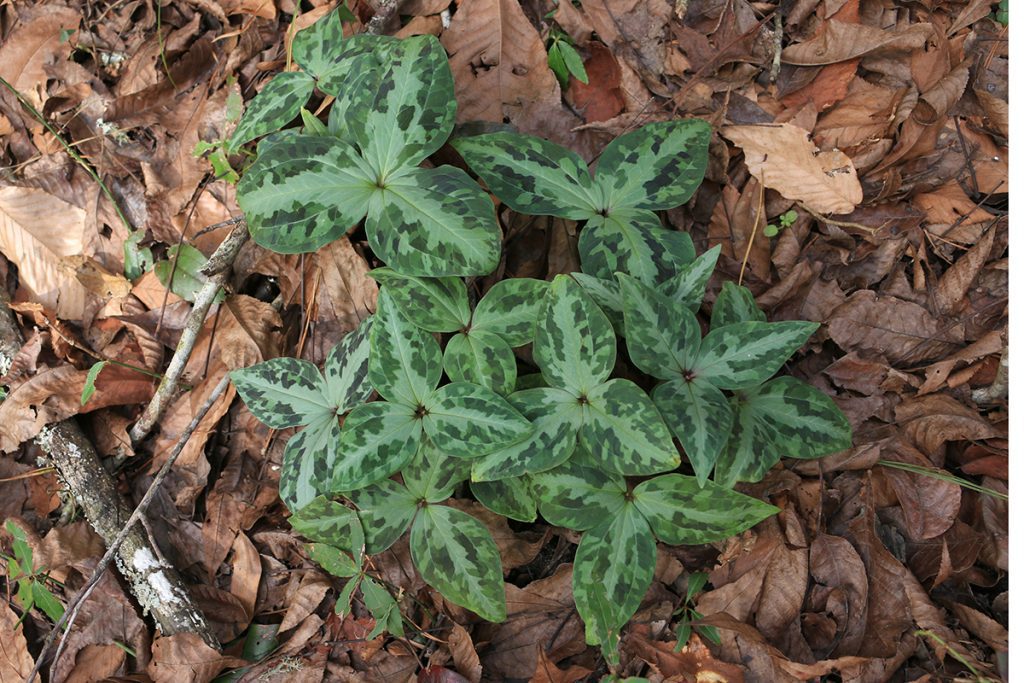
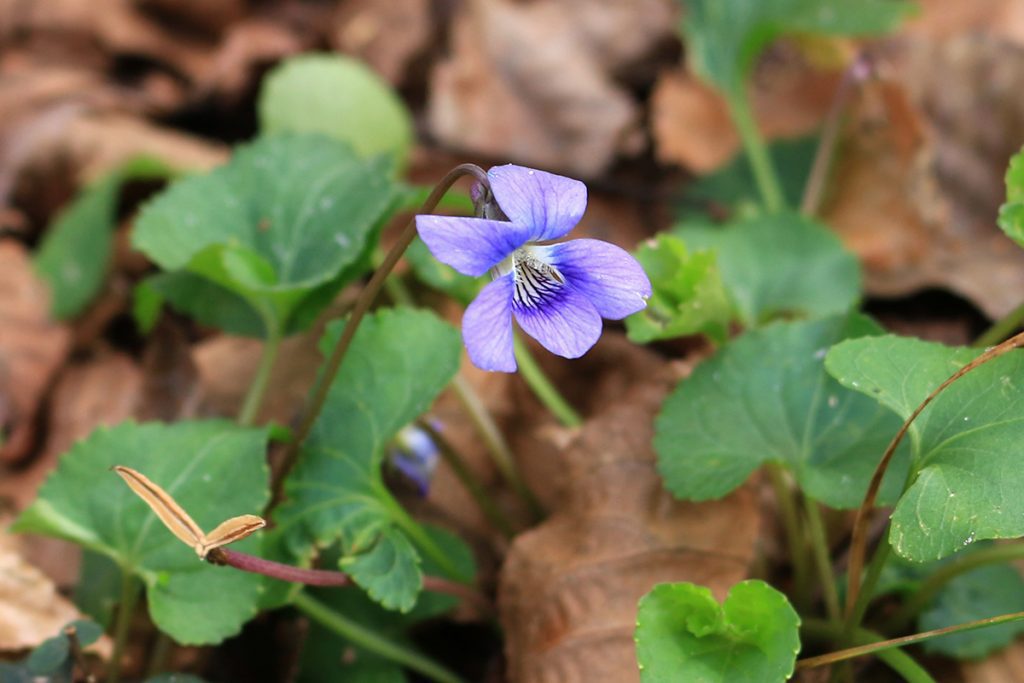
Here’s a common wildflower we see in our area, one of a few violet species that bloom at this time of year.
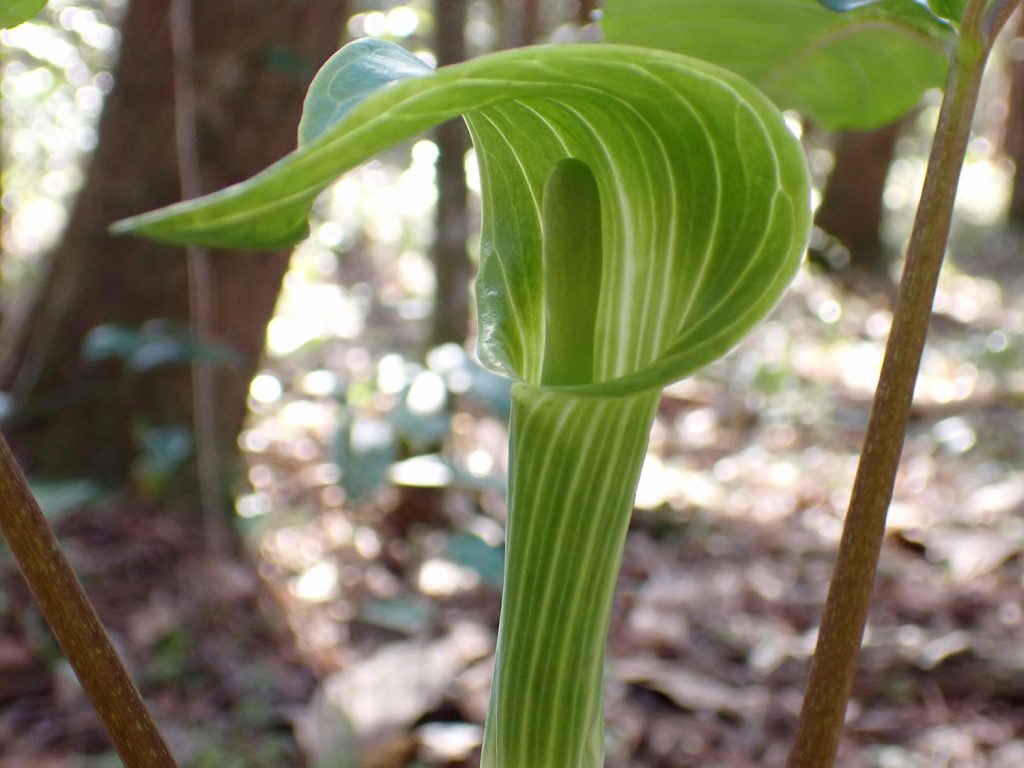
Added February 2023- In October of 2022 (see photos below), I found what I learned were the bright red seedheads of Jack-in-the-pulpit flowers. iNaturalist lists three species of Jack-in-the-pulpit at Timberlane Ravine, so I wanted to return to see them in bloom. This was the only flower I saw on a plant in February, but I’ll return in March when they should be entering their peak bloom.
A visit in March, and more Jack-in-the-pulpits
Added March 2023
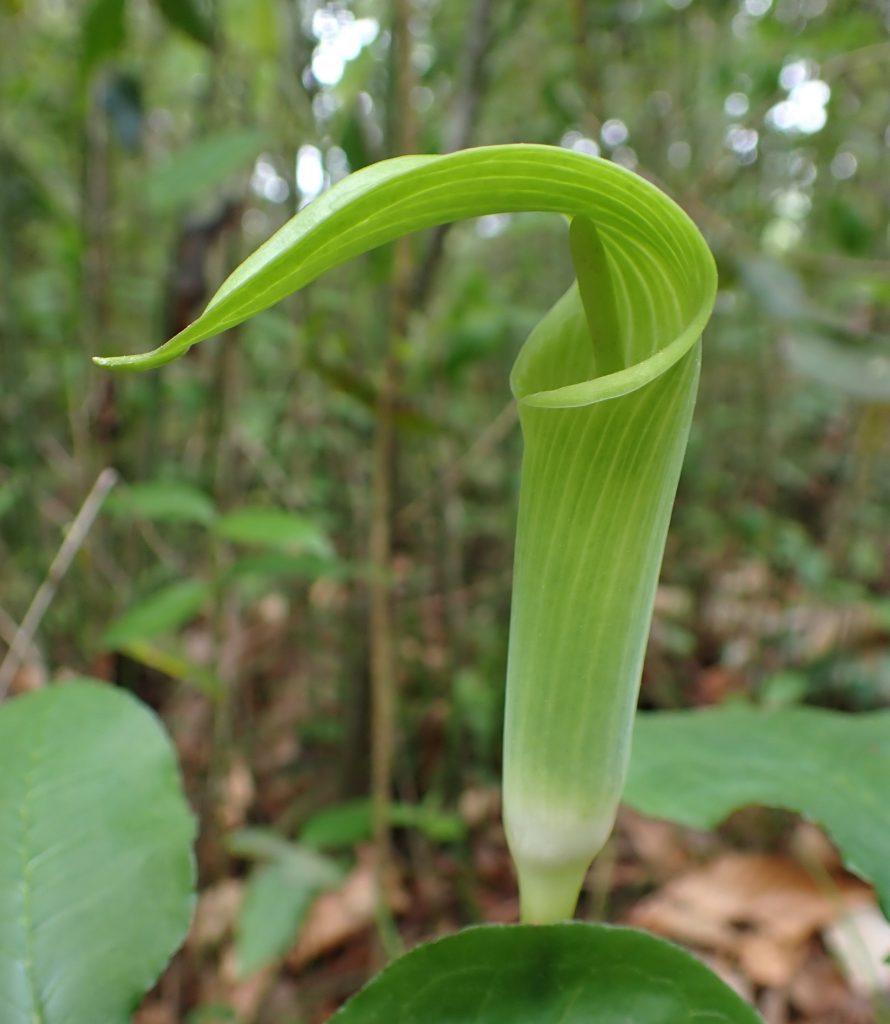
As I found out when I uploaded my finds to iNaturalist, sometimes the five-leaved Jack-in-the-pulpit has three leaves, like the Florida Jack-in-the-pulpit. Here is the flower of the five leaved, and the photo above it is the Florida. They are both a part of the Arisaema triphyllum complex of four or five closely related species.
The most obvious differences are in the flowers. Five-leaved has a smoother, less striped spathe tube (the pulpit) and a more slender spadix appendix (the jack).
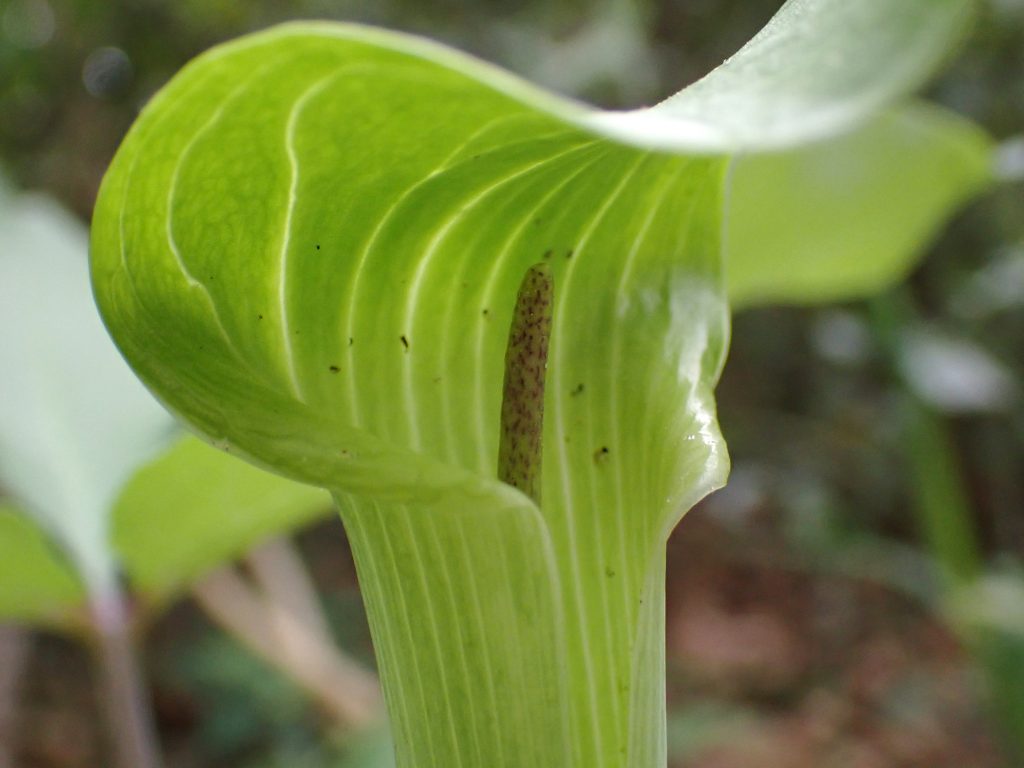
While I saw a Florida Jack-in-the-pulpit in bloom in February, I saw none on my March trip. But there were plenty of five-leaved.
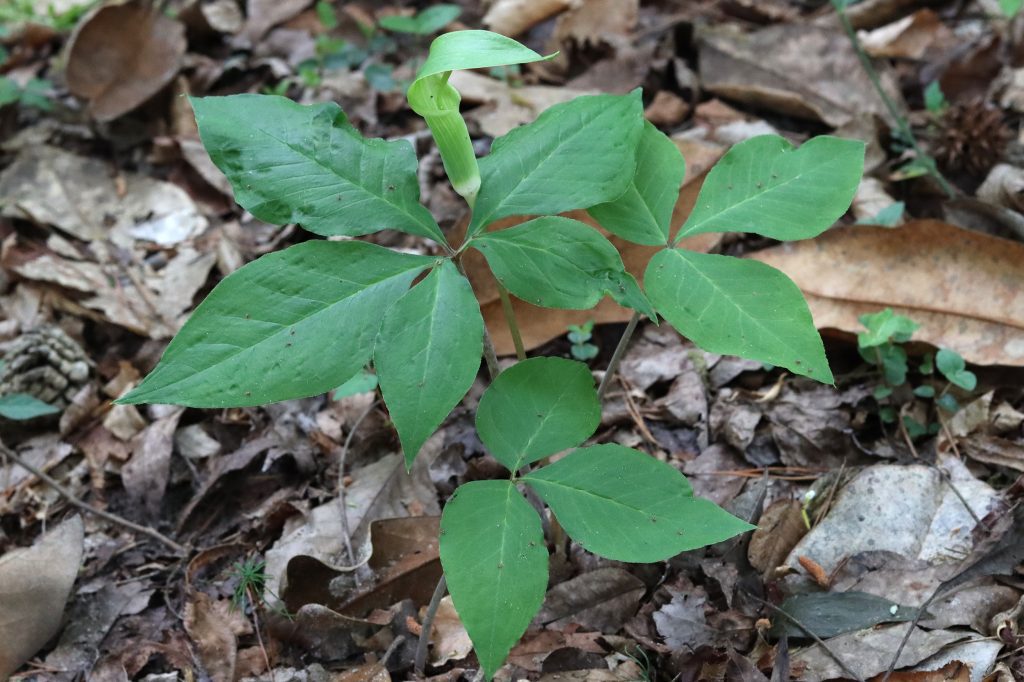
I also saw the third species of Jack-in-the-pulpit found at Timberlane Ravine:
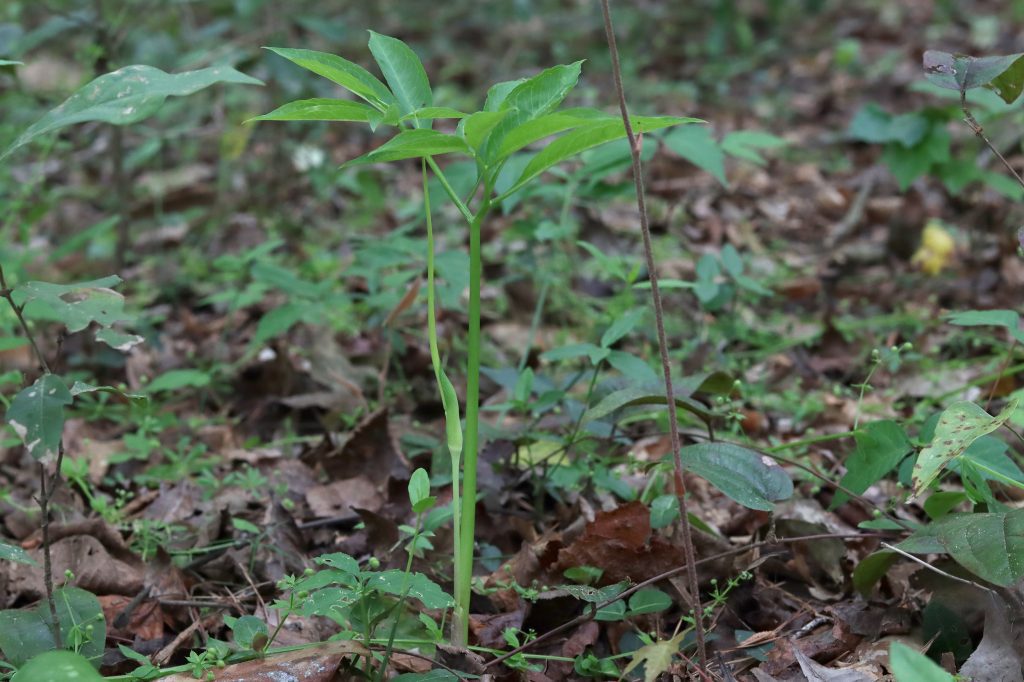
Looking at the seasonality charts for the three species, green dragon and five-leaved bloom about a month later than Florida, though all three are ahead of that schedule here.
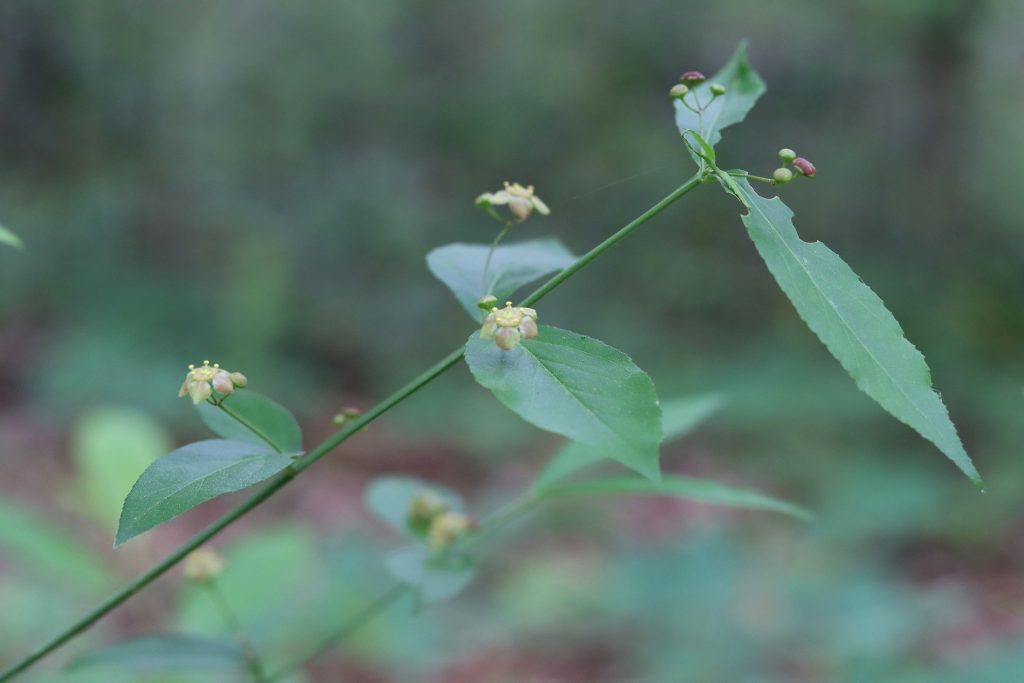
I saw these small, odd looking flowers growing on a shrub. When I iNaturalized it, I found that these are the flowers of the strawberry bush, which I see so much of in the fall. Their fruit now fallen, it is flowering again.
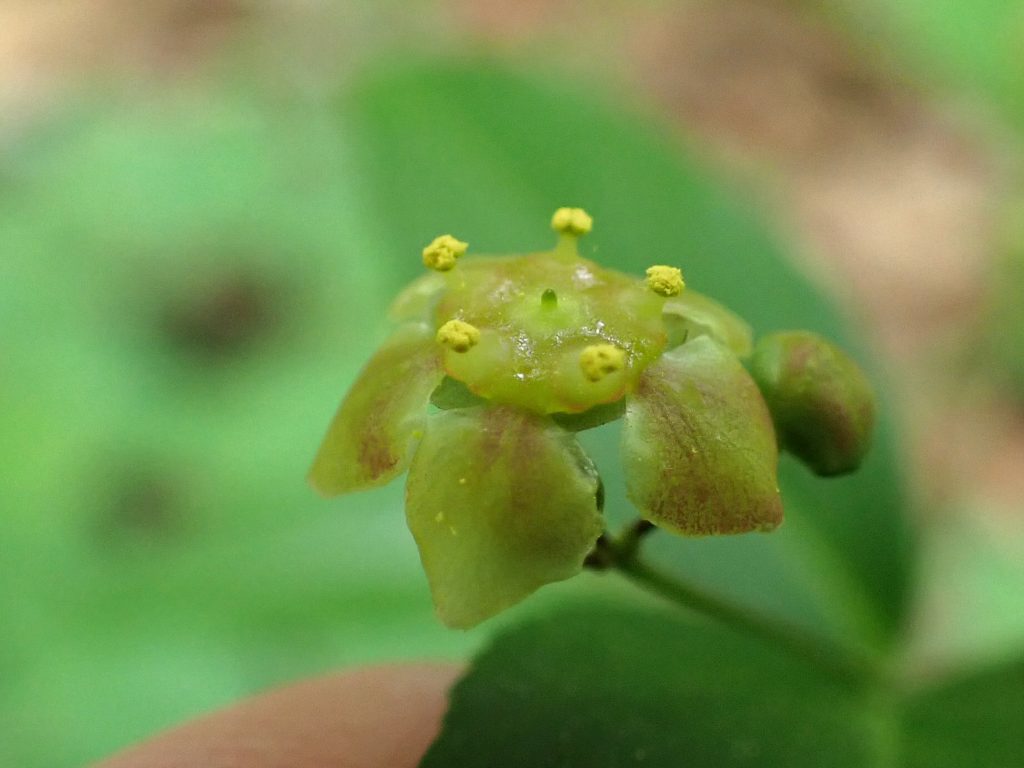
The flower is as odd as its fruit, and I love this plant all the more for it.
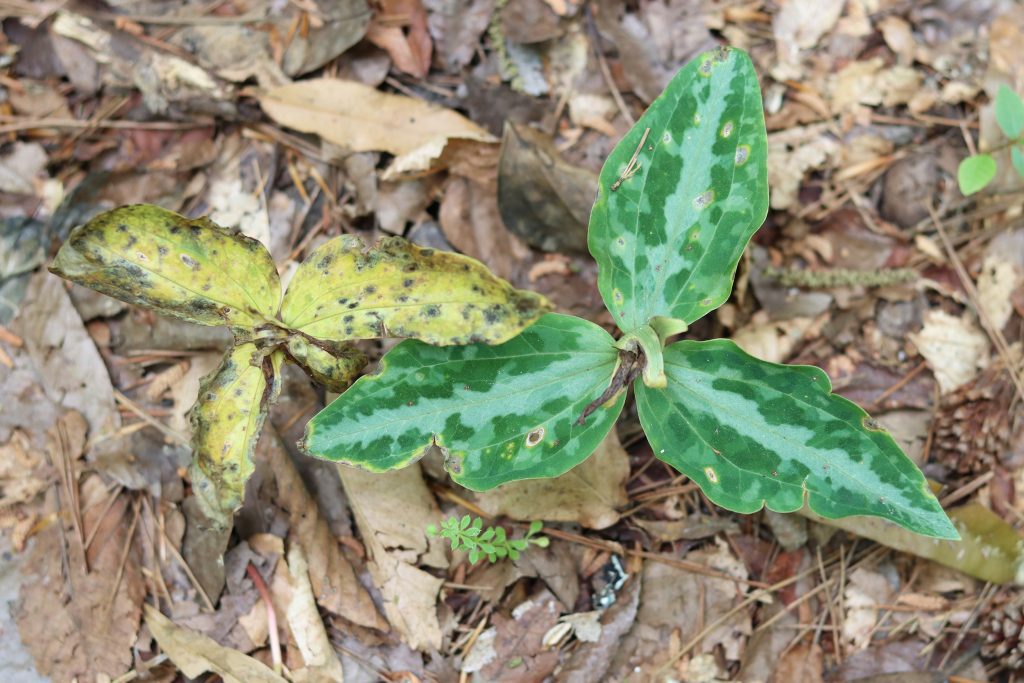
Lastly, the trillium are still everywhere though their flowers are gone.
Plant species you can see throughout the year
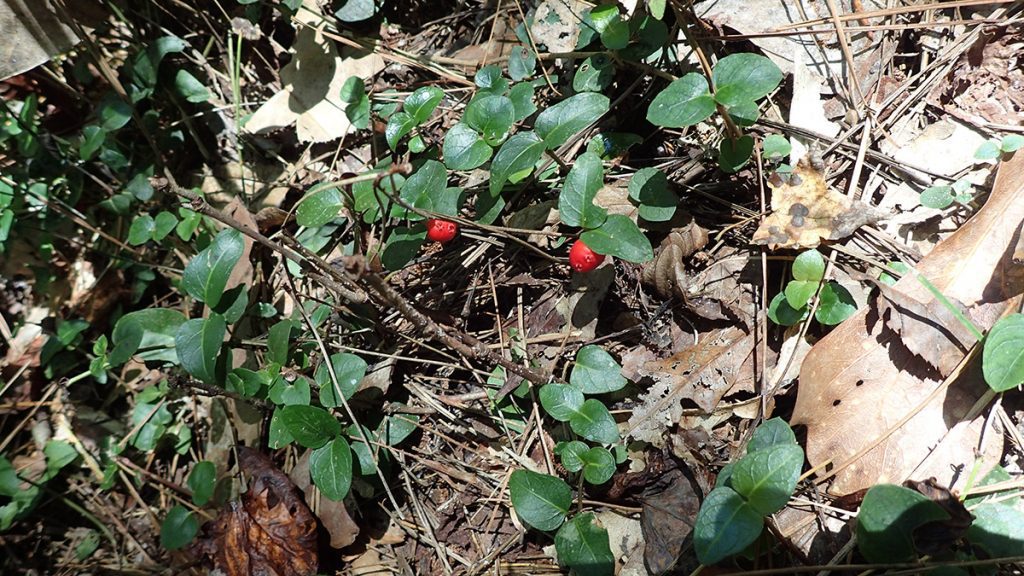
This is one of the most common plants in both common slope forests and upland hardwood forests. You can see its little red berries vining along the ground throughout the year.
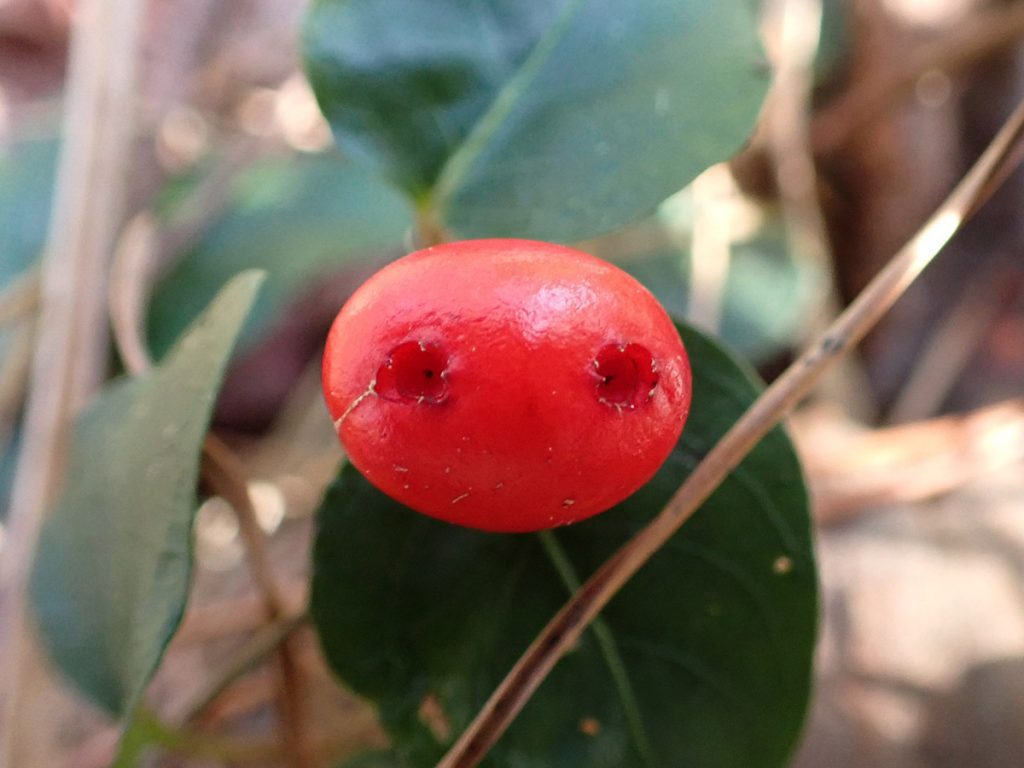
Partridgeberry has twin flowers, which turn into a single berry. That’s why each berry has two holes in it- this is where the flowers fell off.
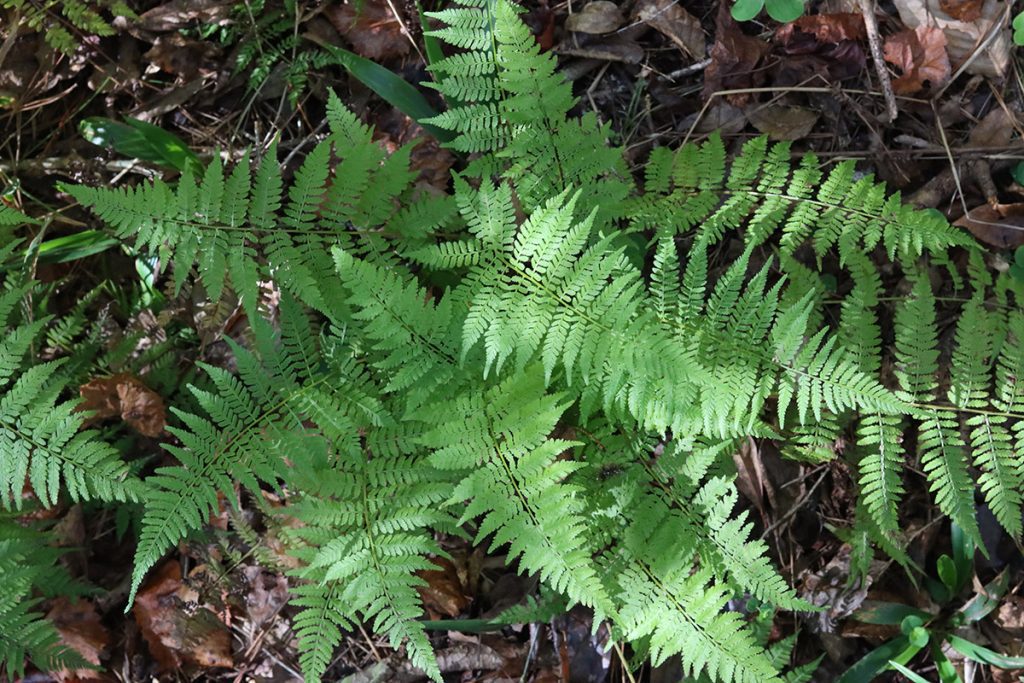
Plants in the fall- red berries and more
Strawberry Bush (Euonymus americanus)
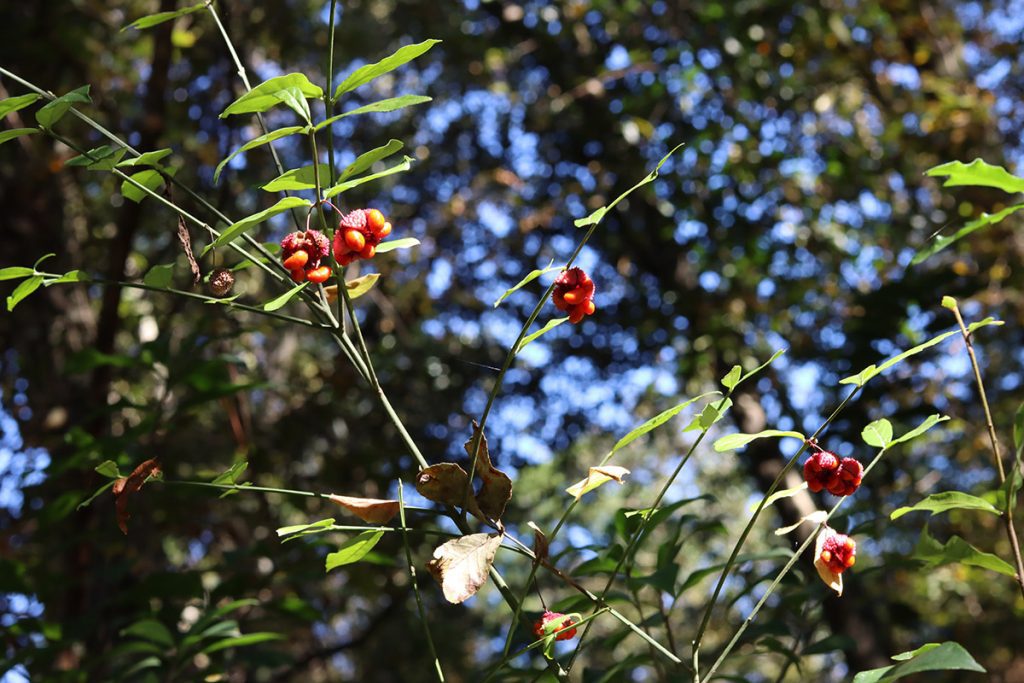
The fruit of the strawberry bush tickles my fascination with quirky looking plants. Rather than rely on animals eating the fruit to spread the seeds, the seeds burst from the fruit to either fall to the ground or be picked at by birds, including wild turkey.
Reading about it in Forest Plants of the Southeast (and their Wildlife Uses), the plant is eaten by deer, even where deer populations are not large. Where there are a lot of deer, the plant disappears. Because of this, strawberry bush is used as an indicator of deer populations.
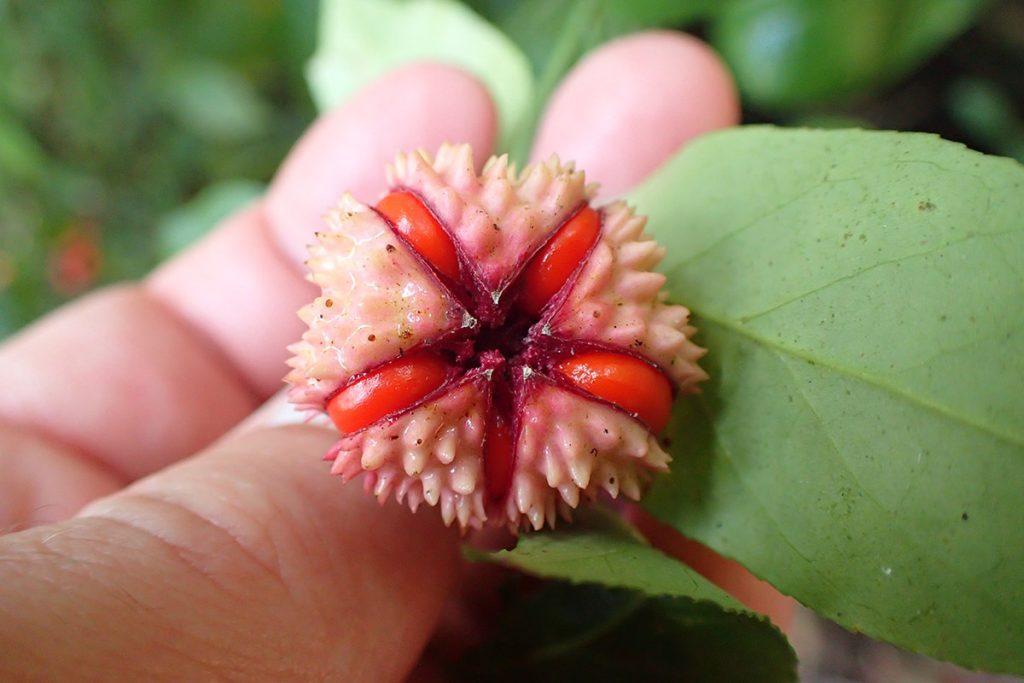
The plant has the nickname hearts a bustin’. Above you can see the fruit as it starts to open.
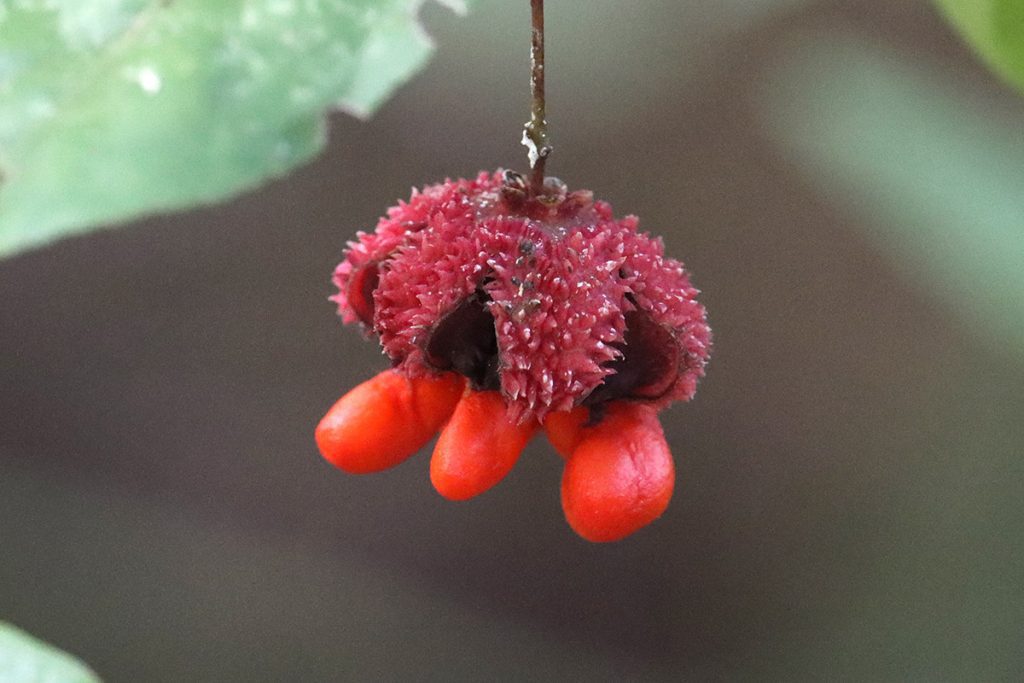
And here the seeds have busted out.
Jack in the pulpits (Arisaema genus)
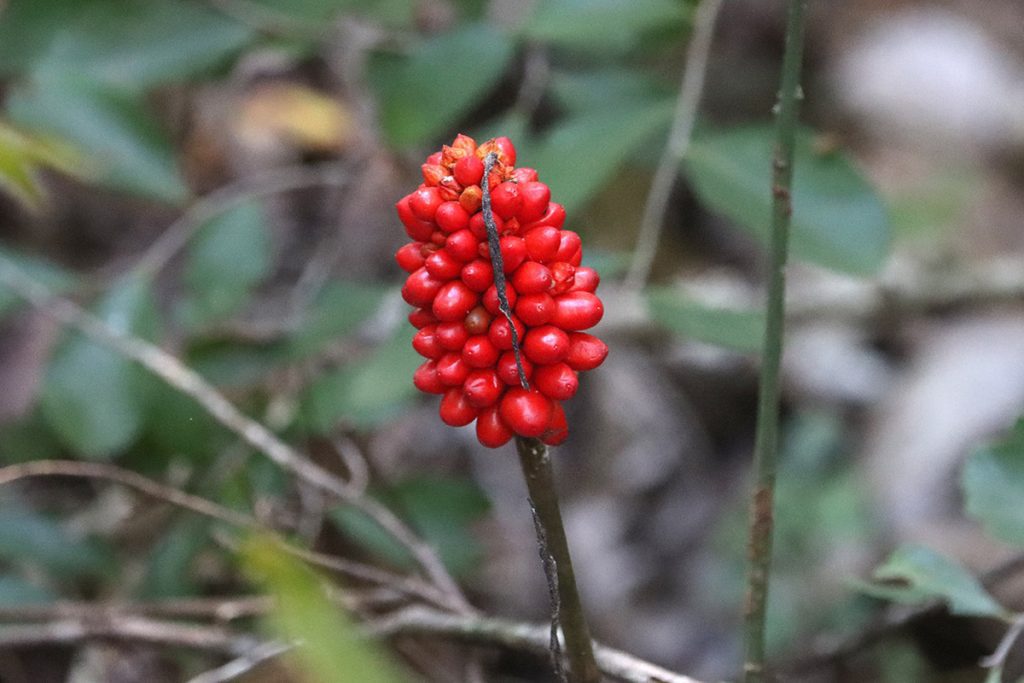
On my most recent visit, I saw a few of these seed clusters growing on leafless stalks. It turns out these are seed heads from a jack in the pulpit. Looking at iNaturalist observations for Timberlane Ravine, I see both jack in the pulpit and five-leaved jack in the pulpit have been observed. An iNaturalist user identified this as a third species in the genus: green dragon (Arisaema dracontium).
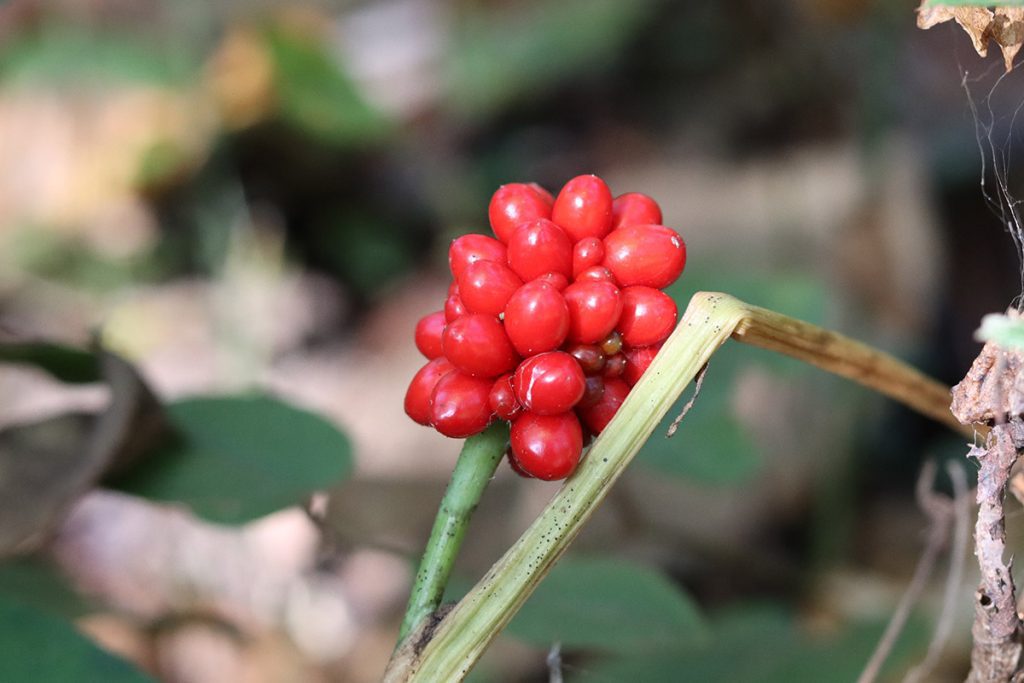
Here’s a smaller seed head, perhaps from another Arisaema species? I do need to get back here in April and May to see these in bloom.
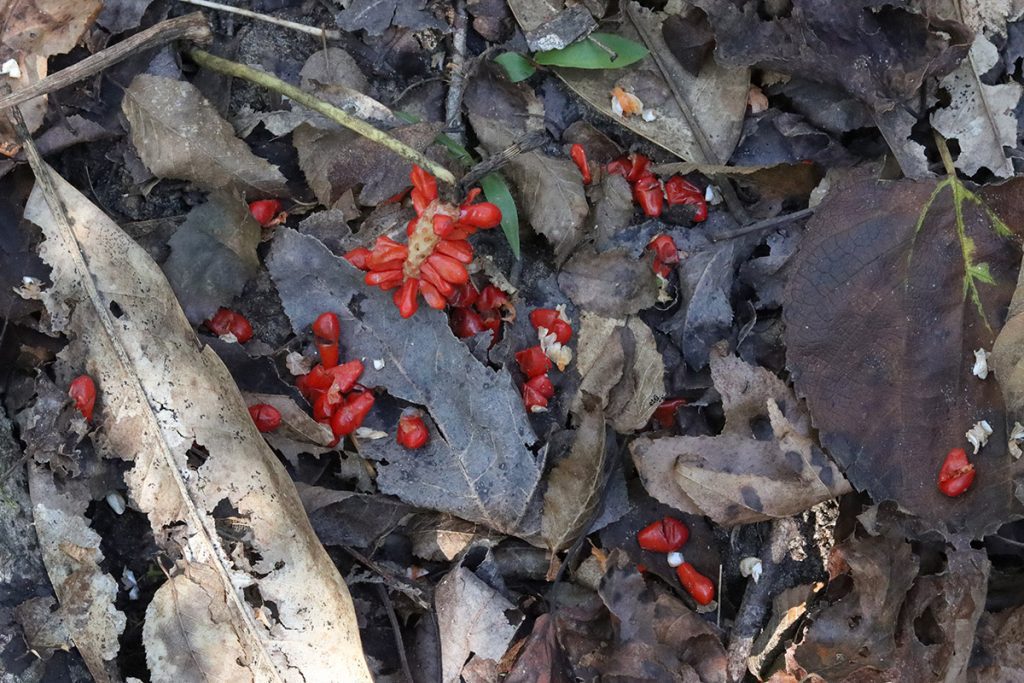
Here an animal appears to taken a few bites from an Arisaema seed head.
Sarsaparilla vine (Smilax pumila)
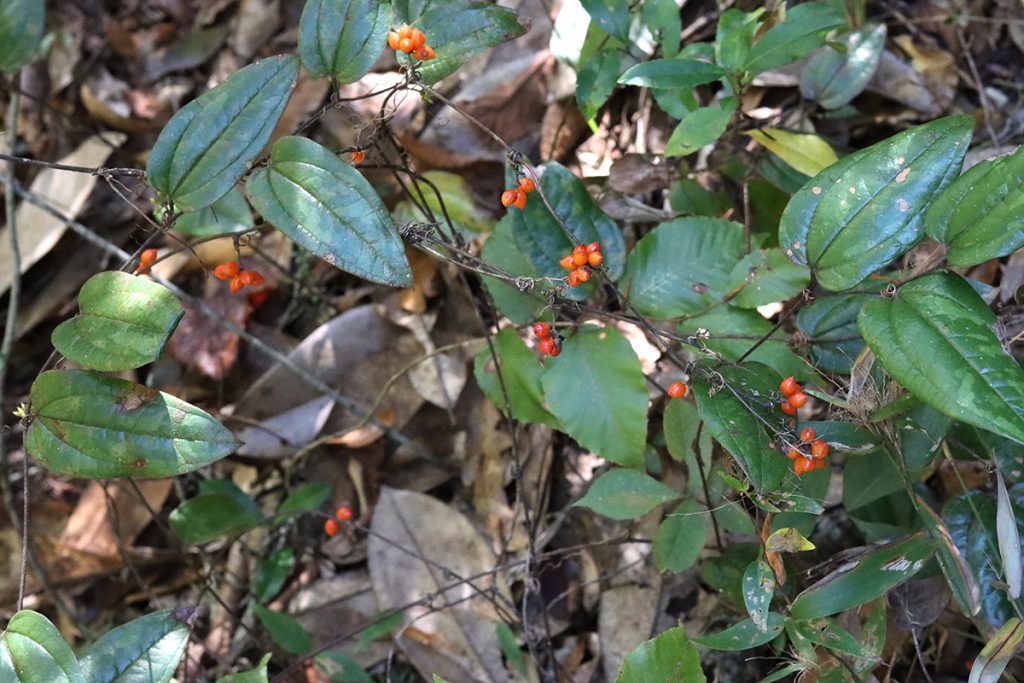
We have about nine different Smilax species in our area. Most have violin shaped leaves, and are thorny. Here’s an oval leaved Smilax with no thorns, and it has cool pointy red berries. Like partridgeberry, this is a species common to both upland hardwood and slope forests.
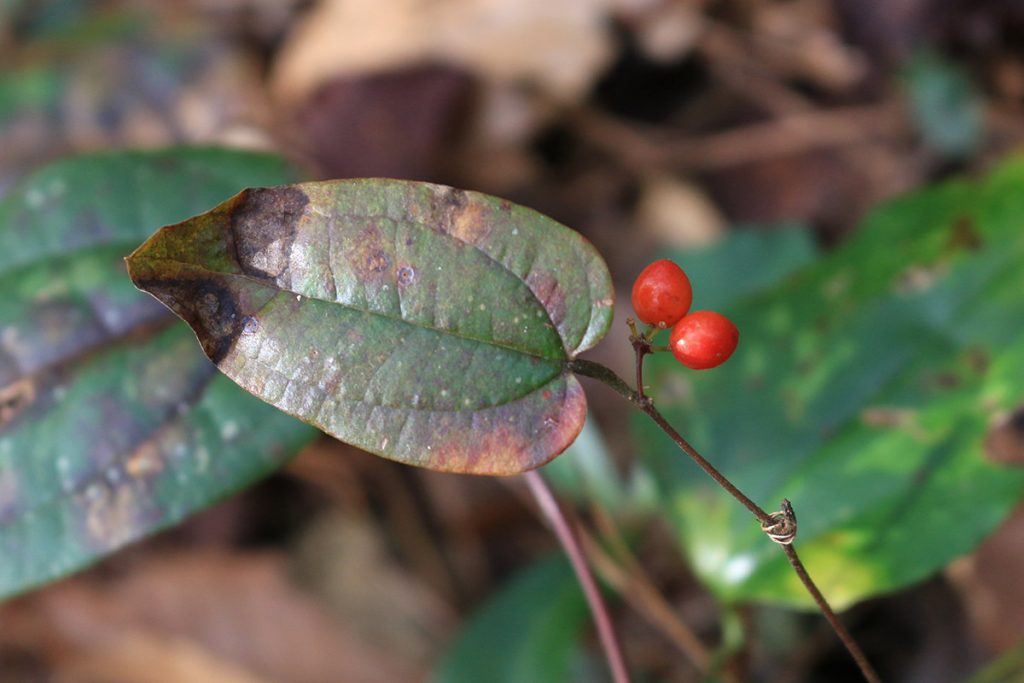
Sarsaparilla, or root beer, is traditionally brewed with the roots of Smilax ornata. I have seen a few sources name that Smilax pumila as well.
Mellichamp’s Skullcap (Scutellaria mellichampii)
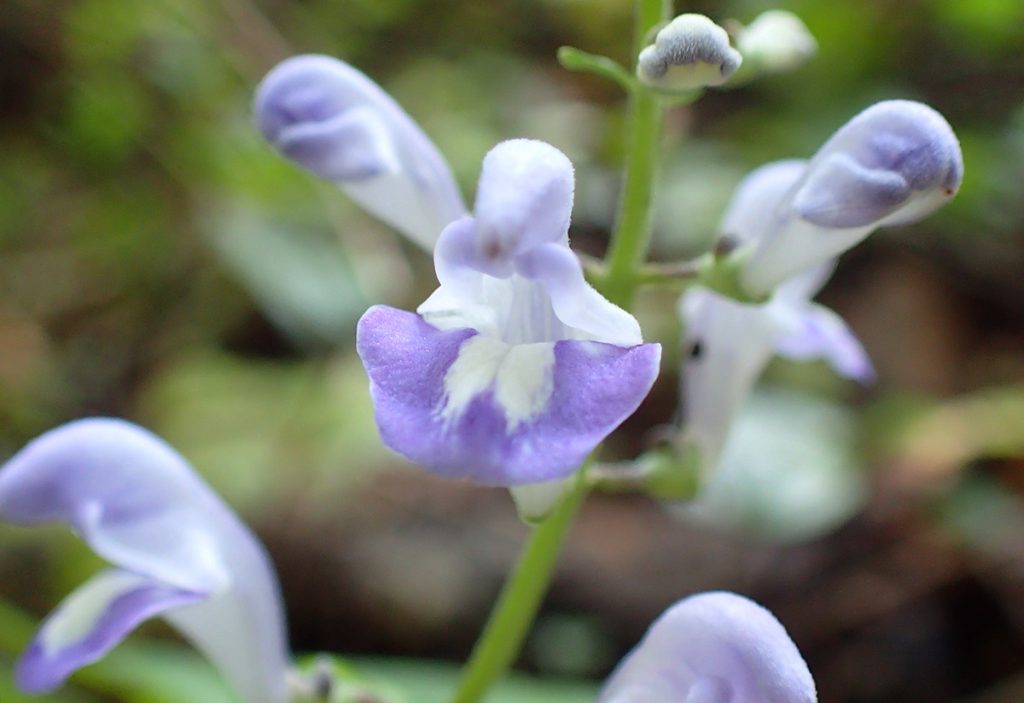
This is perhaps a rare species of skullcap native to the southeastern coastal plain. There are scant iNaturalist observations for Scutellaria mellichampii compared to other skullcap species, and not a lot of online information. GeorgiaBiodiversity.org has a helpful entry listing it as a rare species in Georgia, one that grows on river bluffs, a location where we find upland hardwood forests.
A little bit of insect life at Timberlane Ravine
I’ve only ever visited in fall and winter, so another reason to visit in spring and summer is to see more of the ravine’s insects. Judging by the holes in the fallen trees along the trail, there should be quite a few.
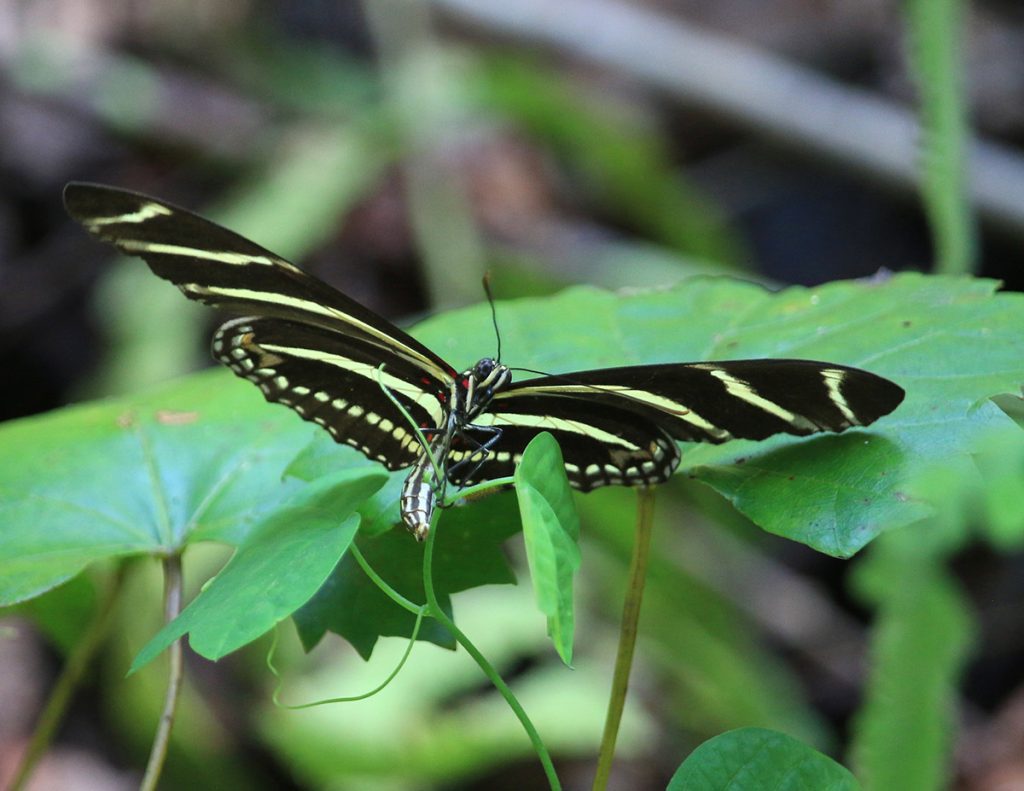
Whenever you see zebra longwings flying in a shady place with no or few wildflowers in bloom, there’s likely to be passionvine around. Here, in a sunny spot by the creek, passionvine mixes with muscadine grape and Smilax vines.
Judging by the leaves of the plant, it’s yellow passionflower (Passiflora lutea). I planted passionflower in my yard for the first time this year, and gulf fritillary and zebra longwing rained caterpillars on it.
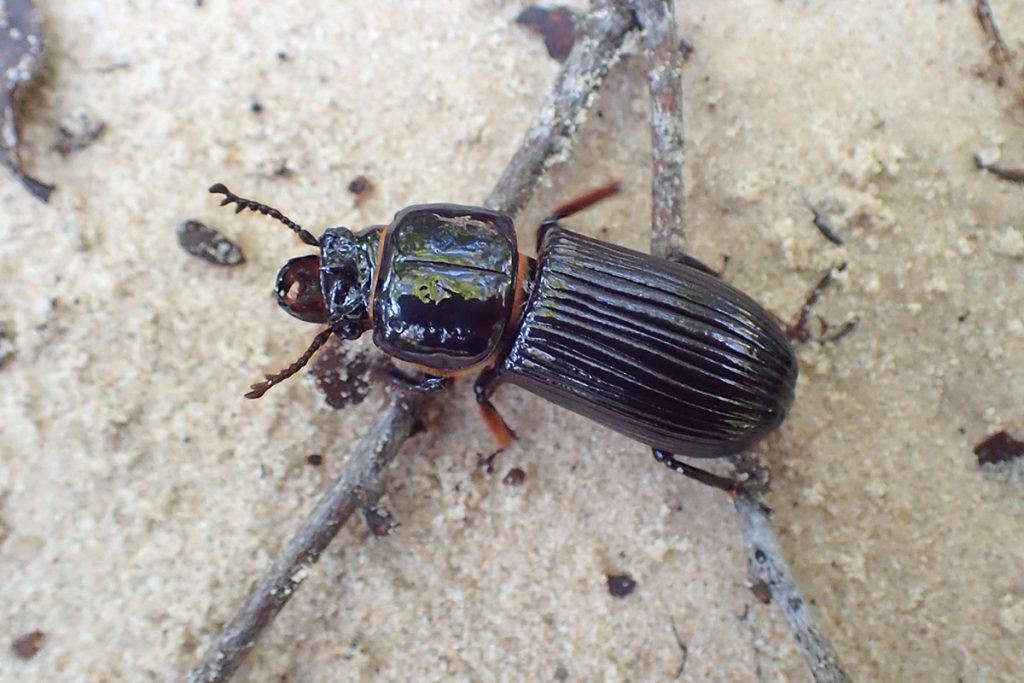
This, according to its iNaturalist description, is a beetle usually found in rotting logs, and rarely seen outside of its wooded habitat. So, here we see one of the insects that helps turn dead wood into soil for the many plants that grow here.
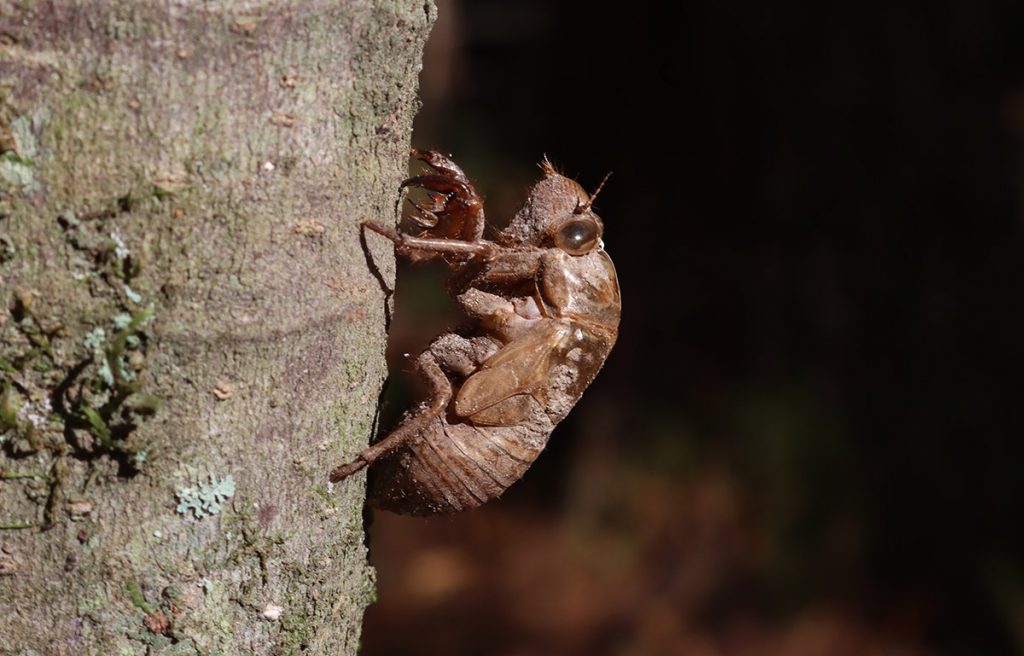
Not an uncommon sight in Tallahassee, but always fun to spot on a tree or fence post.
Managing invasive species at Timberlane Ravine
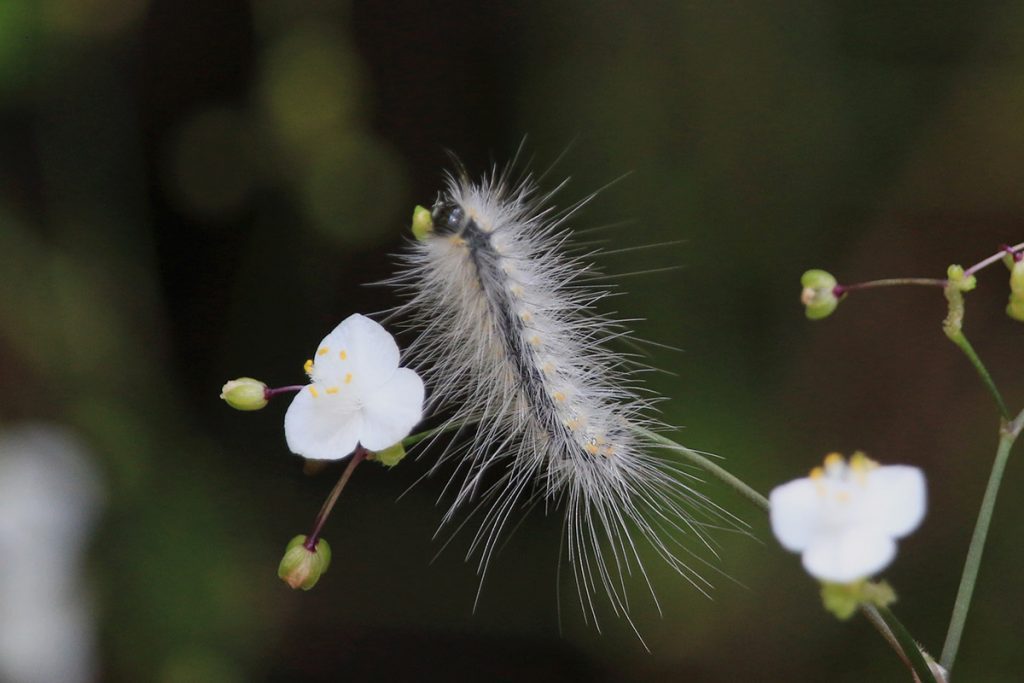
It’s hard to maintain a pristine ecosystem in an urban/ suburban setting. I saw this on our first visit to the park, and while I don’t usually photograph invasives, I thought it was interesting to see a caterpillar eating it. There was a small patch of it alongside the trail, and small-leaf spiderwort is a plant that spreads. Luckily, the City of Tallahassee has tackled the problem.
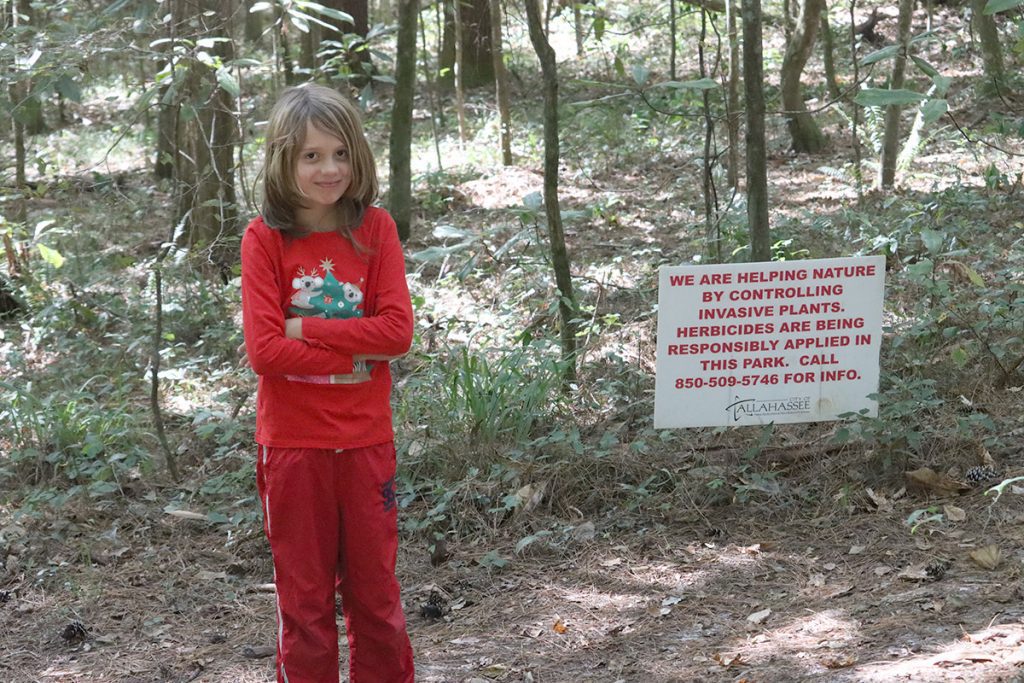
I haven’t seen small-leaf spiderwort here since 2020. Since then, we started seeing these signs along the trail.
Lighting and photos at Timberlane Ravine
At different times of day, different spots on the trail, and at different times of year, the lighting here ranges from grey shade to a higher contrast texture of sunlight and shadow. This presents challenges and opportunities when taking photos.
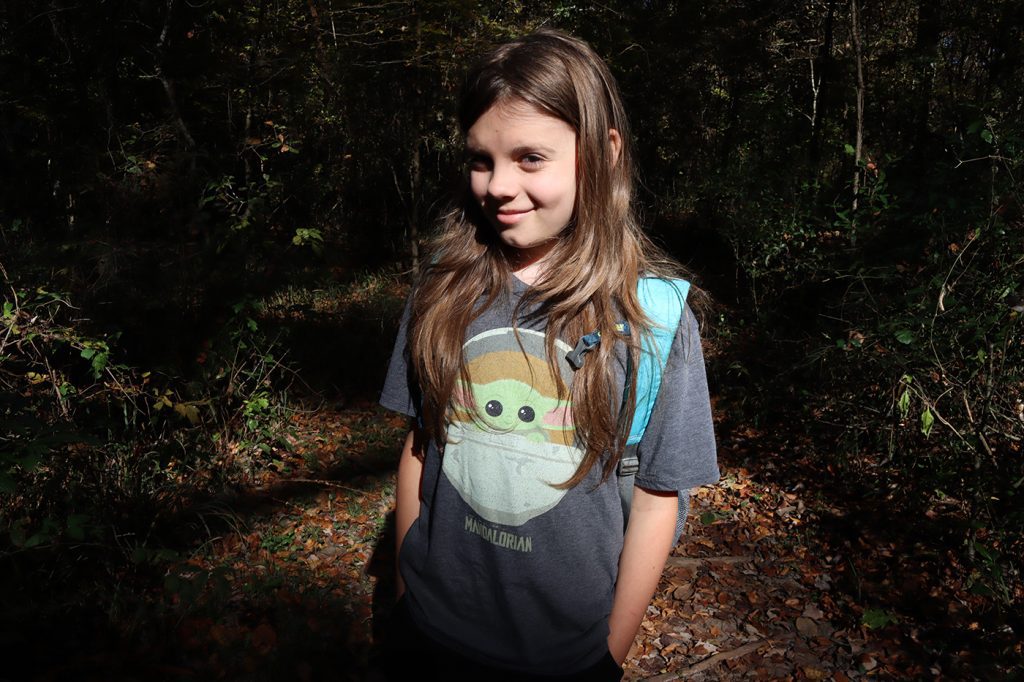
I’ve spent my fair share of time positioning interviewees in ever shifting shafts of light. Here, my older son Max is in a bright spot within a shady area. After exposing the camera for him, the background darkens and further emphasizes him against it.
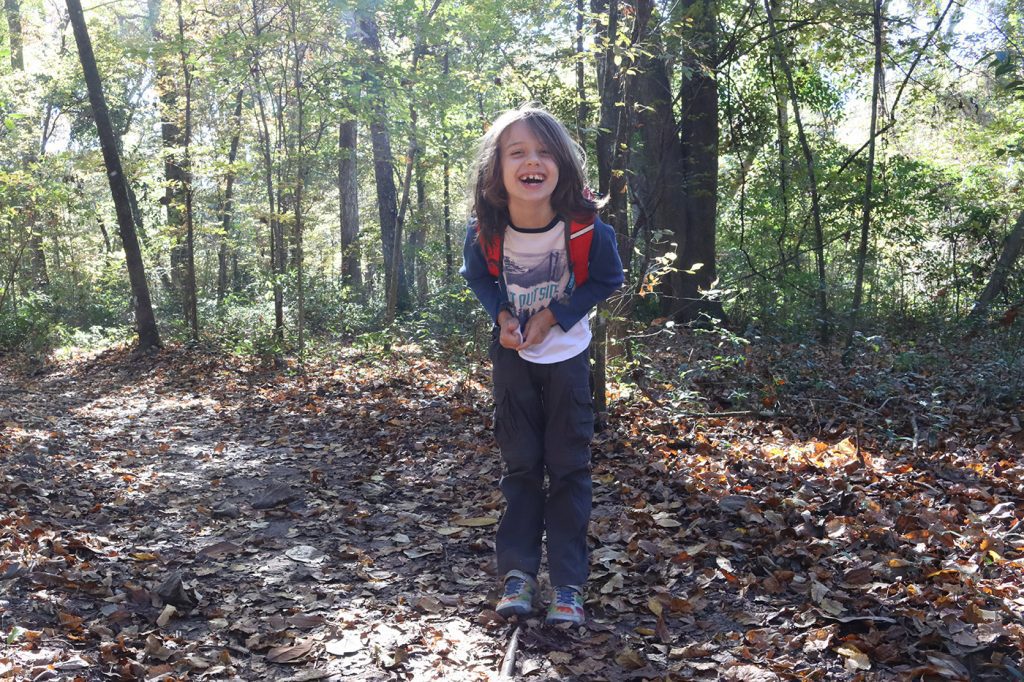
Here on the same day, Xavi stands next to a shaft of light- you can see the spot next to him on the ground, as well as the harsh highlight in his hair. In not so bright a spot, I don’t have to expose down, and we see the background.
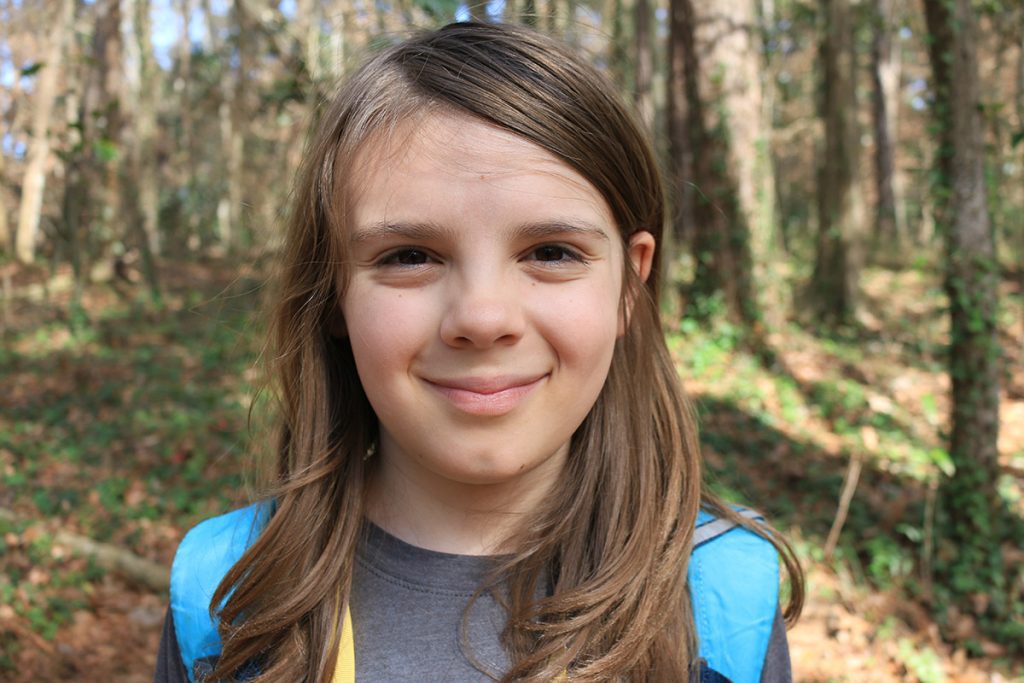
In January, the deciduous hardwood trees at Timberlane Ravine have dropped their leaves, and more sunlight reaches the ground. Is this why certain wildflower species in this habitat bloom then? Anyhow, the light is warmer and more even than at other times of year.
Instead of positioning a subject in the light surrounded by dark, here I included the sun itself in the frame. Exposing for the highlights where the sun hits the ground, I darkened the whole scene for something spookier than we might have felt there in person.
Keep your eyes open- you never know what you’ll find.
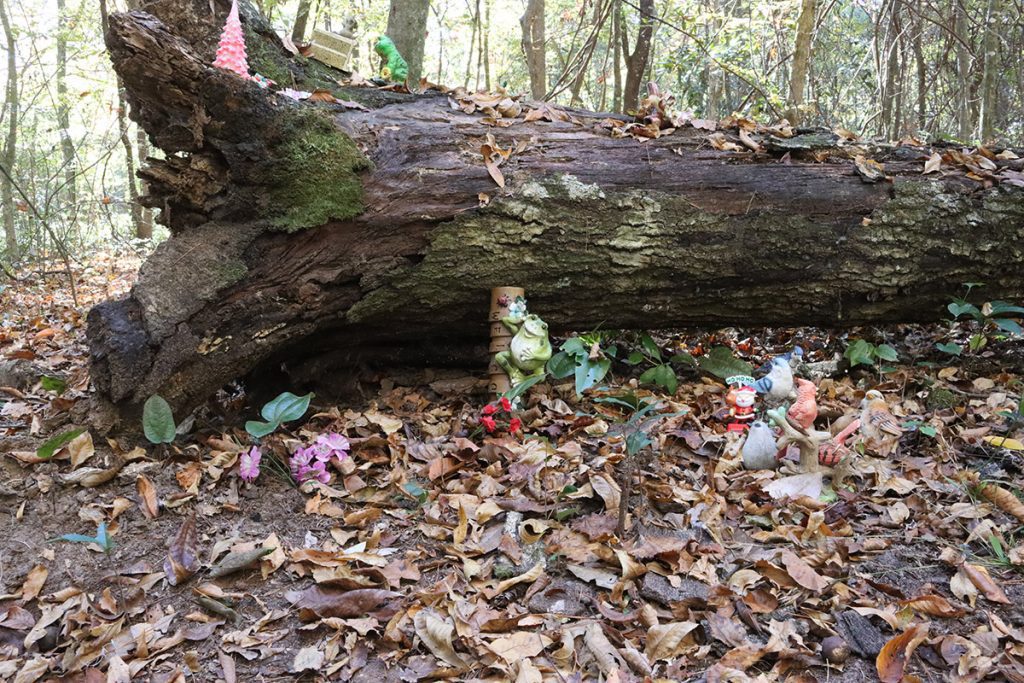
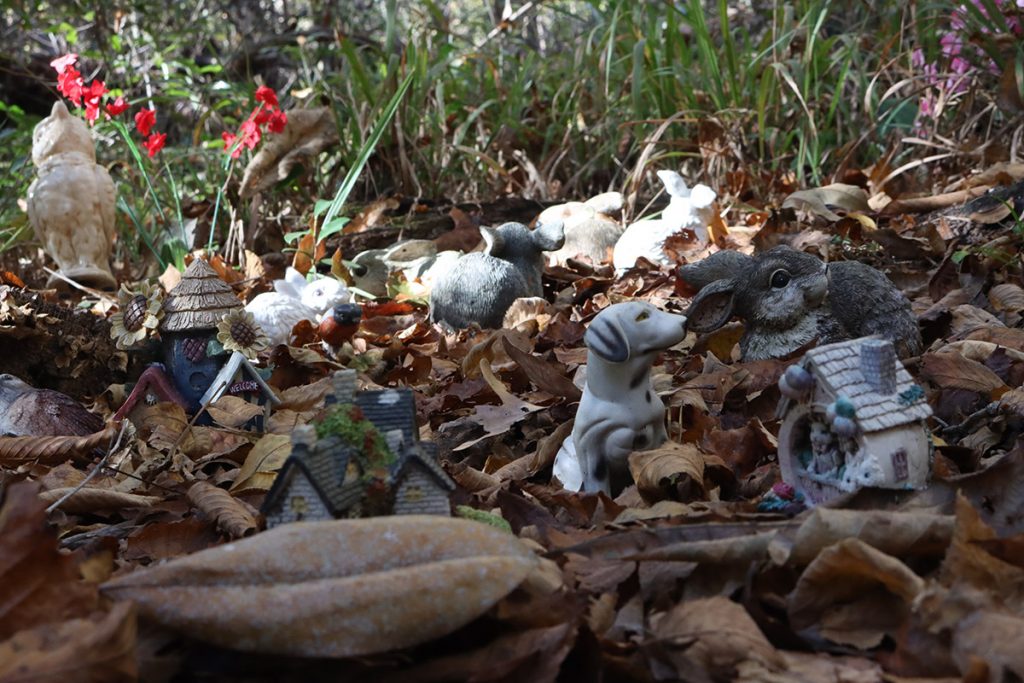
Someone else feels this is a magical place, and expressed it in their own way. I think the red is what first caught my eye here, making me wonder, from a distance, what kind of red wildflower was blooming in an upland hardwood forest in November?
AllTrails lists this is a 30 minute walk. But that’s if all you do is walk. To me, this is a place to take it slow and keep my eyes open, and camera ready. I spend a lot of time walking with my head down, looking for the little things, the living things. I can get kind of hyper-focused on looking for wildflowers or mushrooms. Then I look up and see the gentle slopes, winding creek, and my wife and kids spread out across it all. I have to be reminded sometimes that a forest is more than its plants.
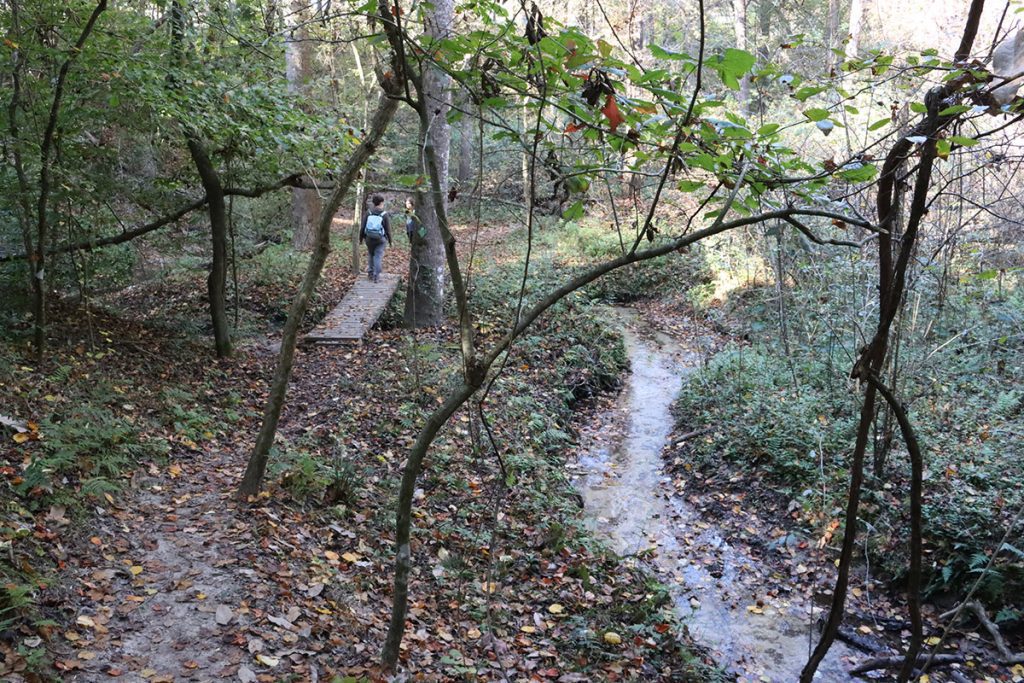
Upland Hardwood Forests on the Ecology Blog
The Wolf Creek Trout Lily Preserve in Grady County Georgia has many of the plants above. The highlight, though, are yellow slopes of dimpled trout lilies (Erythronium umbilicatum). Typical of this habitat, dimpled trout lilies are a species common further to the north. Looking at its iNaturalist observation map, it’s dense in and around the Appalachicans, but rarely observed in the southern half of Georgia. It then pops back up on the slope forests and upland hardwood forests of the extreme south of Georgia and in north Florida, between the Apalachicola and Aucilla Rivers.
Down the road in Thomasville is the Lost Creek Forest. This forested area around Yamacraw Creek is located near the Thomasville Airport. The same community members that worked to preserve Wolf Creek did the same here.
